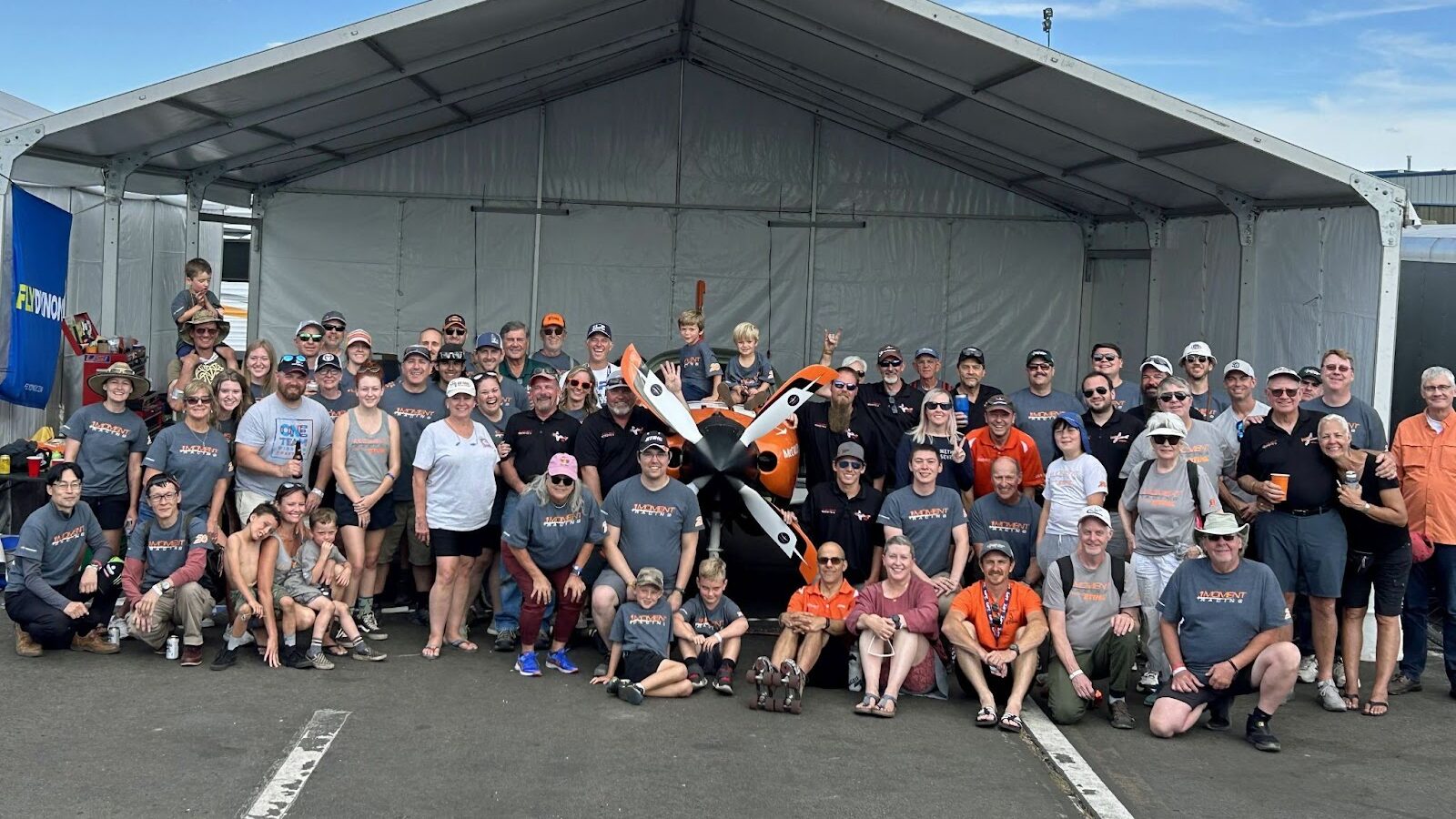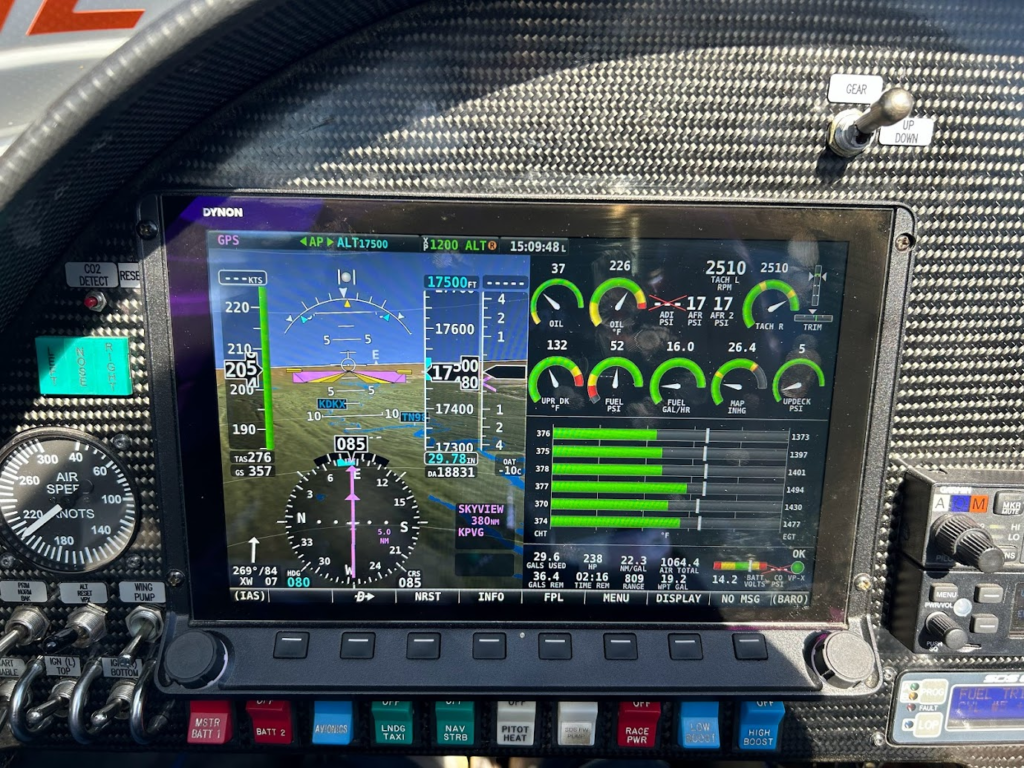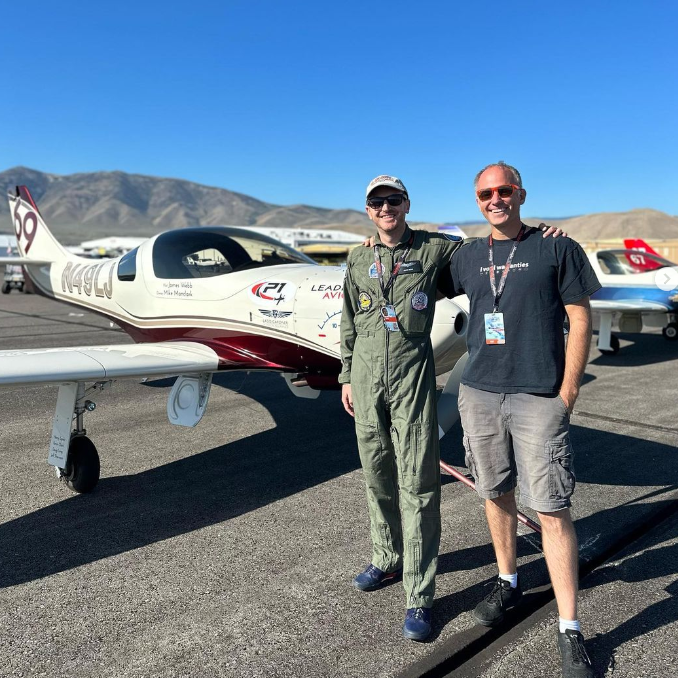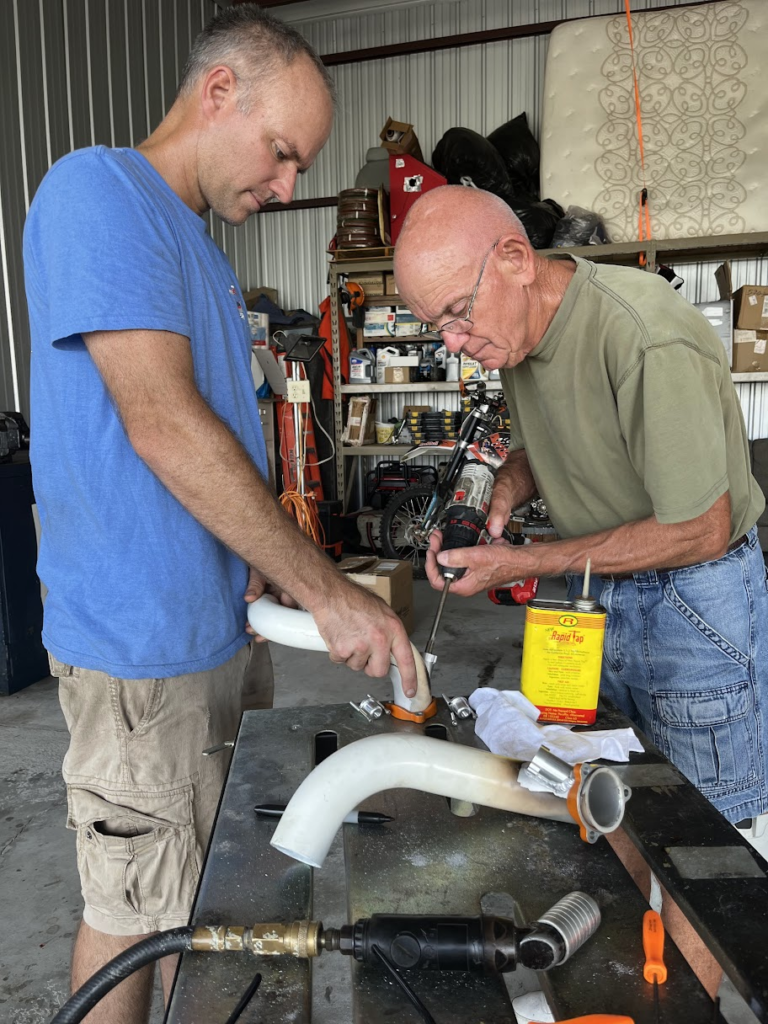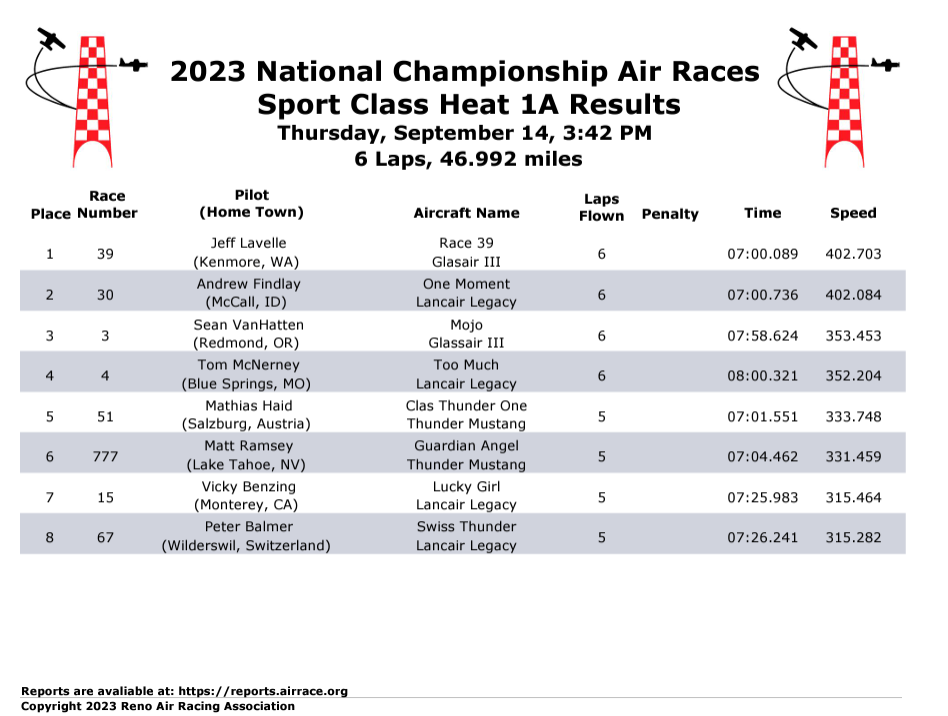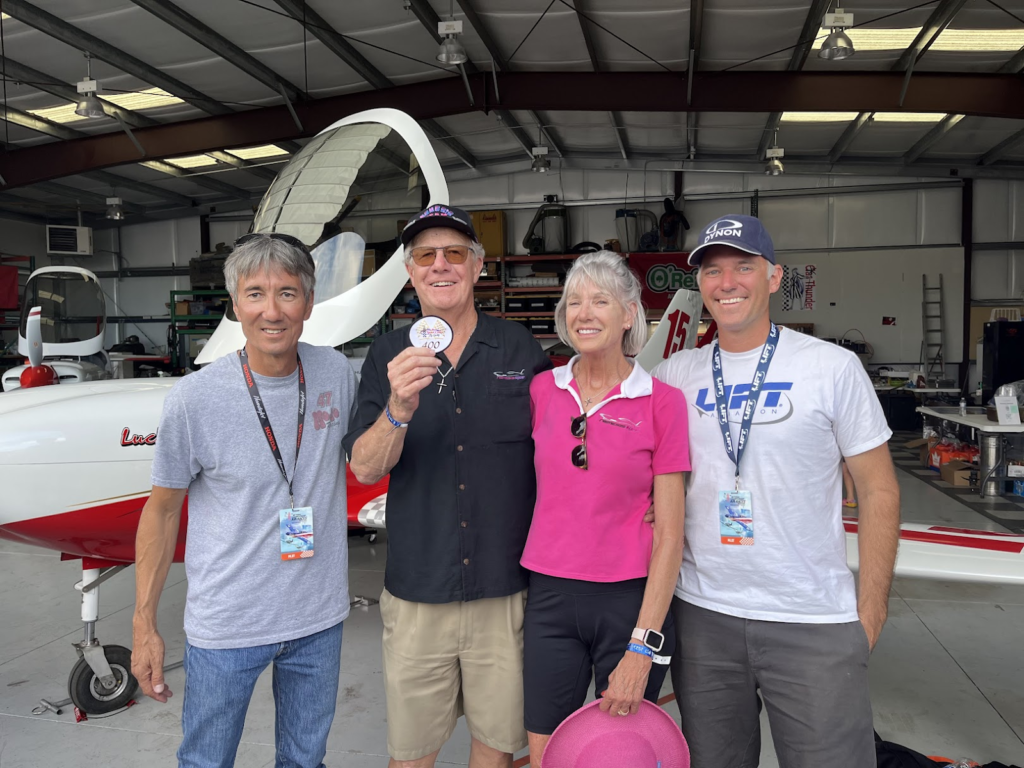What an amazing year of racing with new locations, a growing class of pilots, and new energy in the sport! The airshow season was back in full swing and it was an incredible year of flying!
Engine changes, and engine changes…
Air racing is a tough sport. And it’s even tougher the year after a DNF. Because the first thing you have to do is make an extra, unscheduled trip from the East Coast back to Reno to fix the airplane before flying home.
This year things were even more complicated.
On the plus side, we came prepared with a spare engine in case we needed it during race week. But given that our engine failure was Sunday afternoon during the Gold race there was not enough time to make the necessary repairs before everyone returned home. So it wasn’t until October, after we had some time to recover and catch up on life’s various responsibilities, when some of the team could travel back to Reno and, with the help of Michael Cummings and the Thunder Mustang crew, get the spare engine installed.
Unfortunately, while breaking in the spare engine for the cross country flight home, Andy noticed a loss of power, and a post-flight inspection discovered a stuck piston!
With this latest hiccup, it wouldn’t be until March when a set of stock pistons and cylinders could be sourced and installed. And lastly, scheduling conflicts and bad weather meant Race #30 could not return home until April.
NWOC
In February, Andy attended the annual National Warbird Operator Conference (NWOC). Many of these pilots have been involved with racing in one form or another and it’s a great time of meeting the people who fly and maintain these historic airplanes and hearing their stories and lessons learned to keep them flying.
Sun N Fun
Next on the calendar was a trip down to Florida for Sun N Fun. Alex and Grayson got to come and see the airshow with friends.
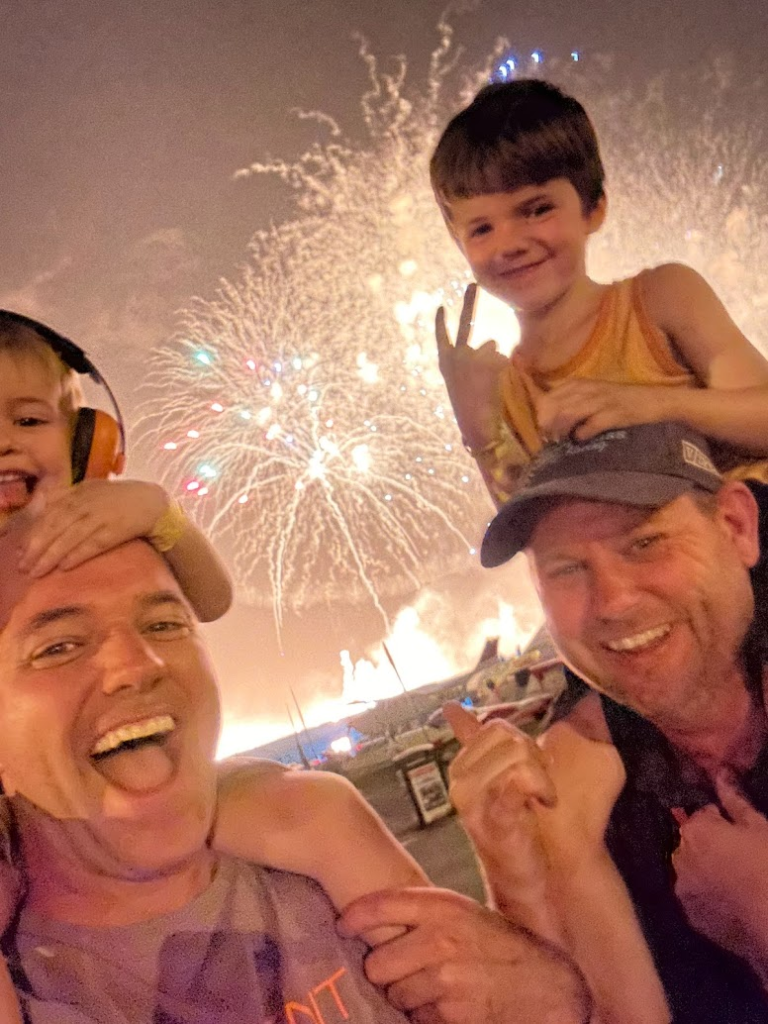
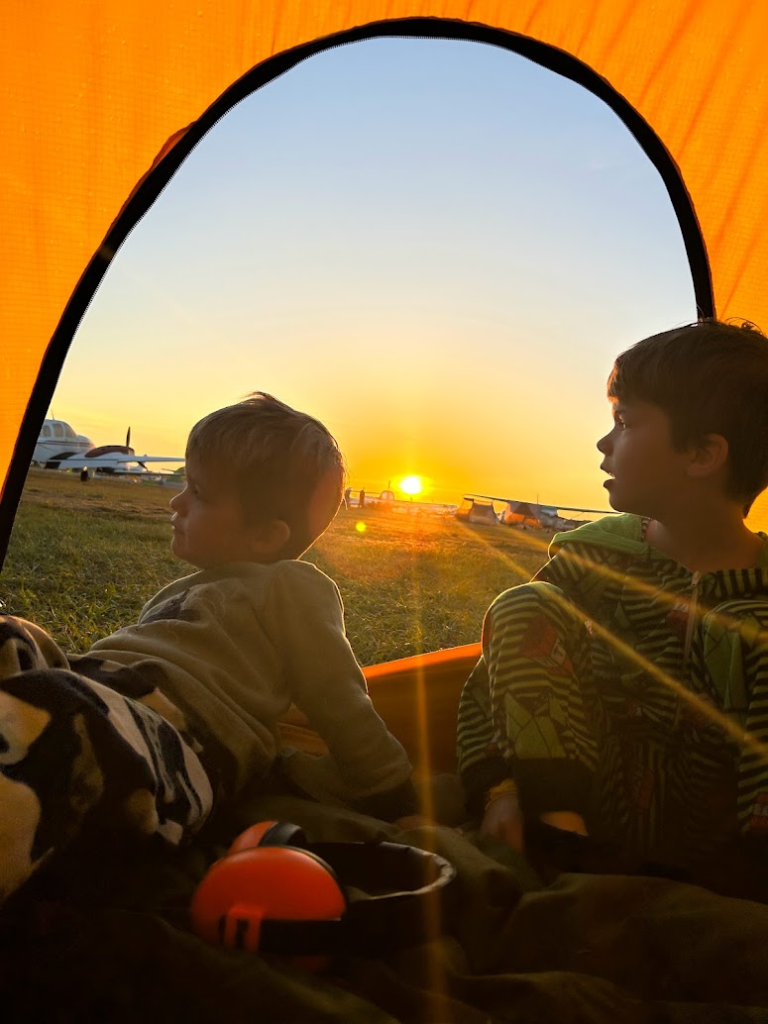
PRS
In June Andy and Race #30 flew back to Reno for PRS. When RARA announced this would be the last Reno Air Races, there was an expected surge in the number of rookies throughout all of the classes. As always PRS was an awesome time of formation flying and ripping around the course.
This year a crew from the Smithsonian Channel attended and followed rookie and local team member Nick Biondo who got qualified in Race #55 “Unleashed”.
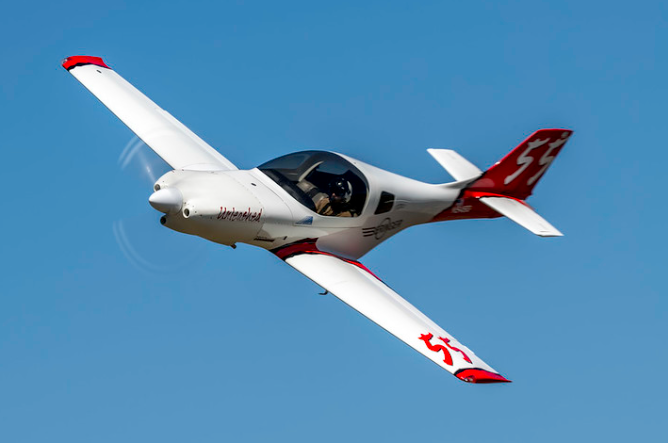
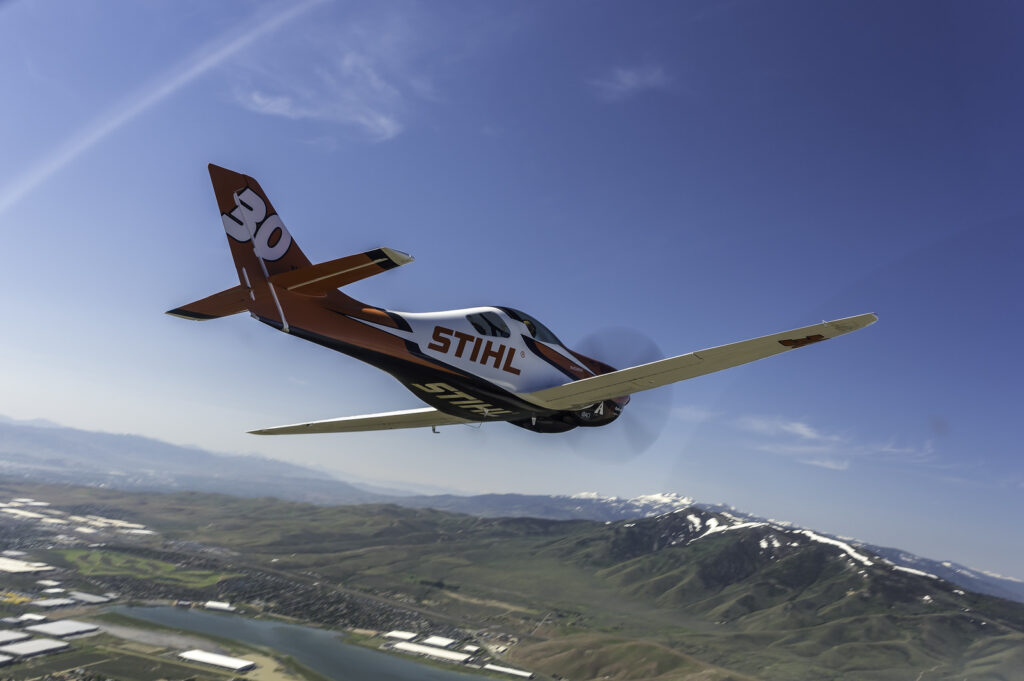
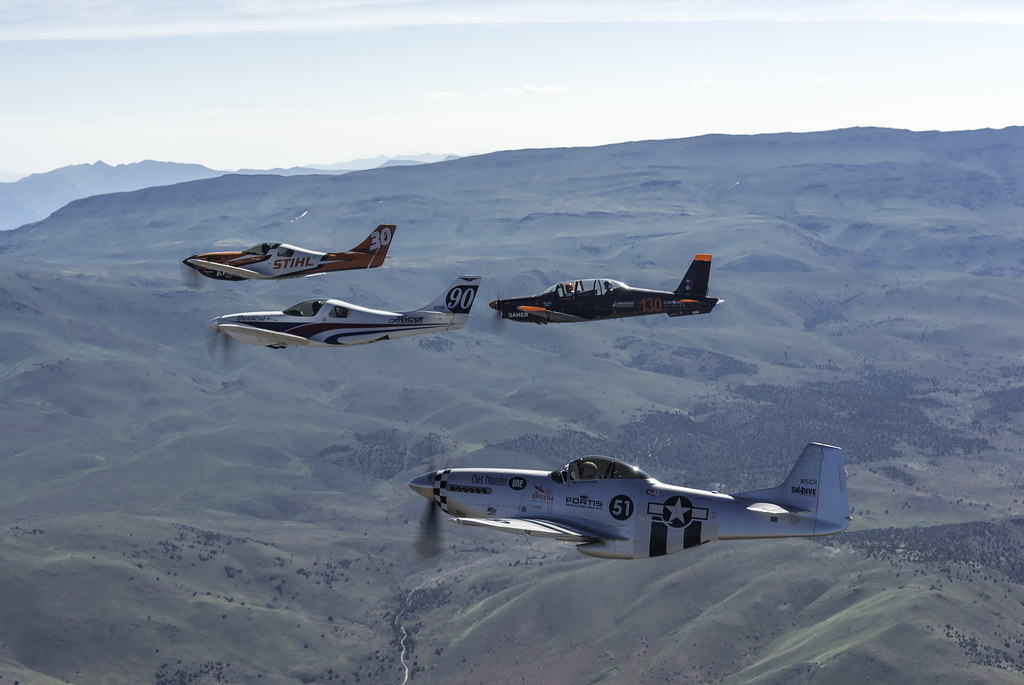
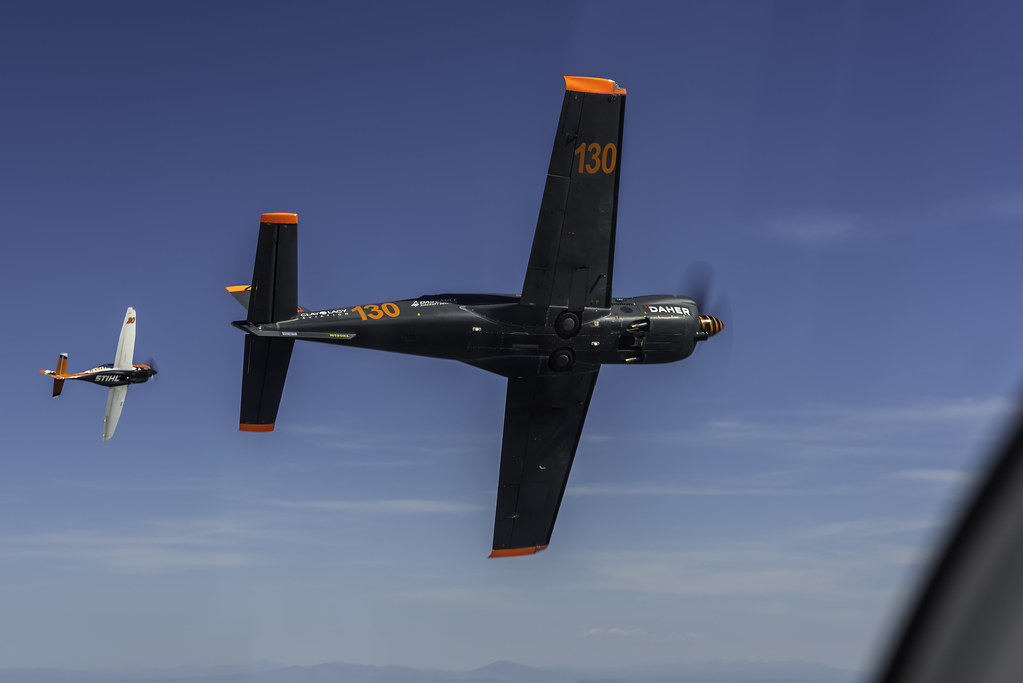
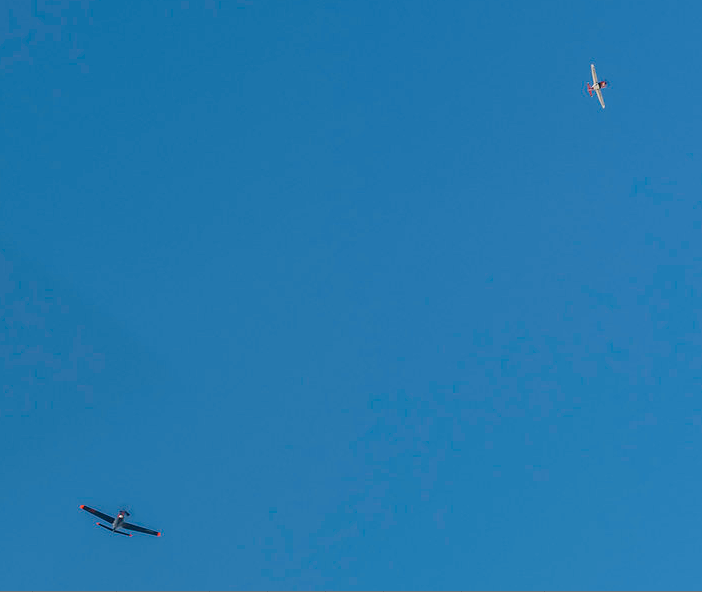


New Pistons and AVC
While we had been running custom pistons since 2017, last year’s failure revealed there were still gains to be made in power and reliability. Some adjustments included changes to the skirt profile and the crown was changed from a dish style to flat style with the help from a new piston supplier, Combustion Technologies.
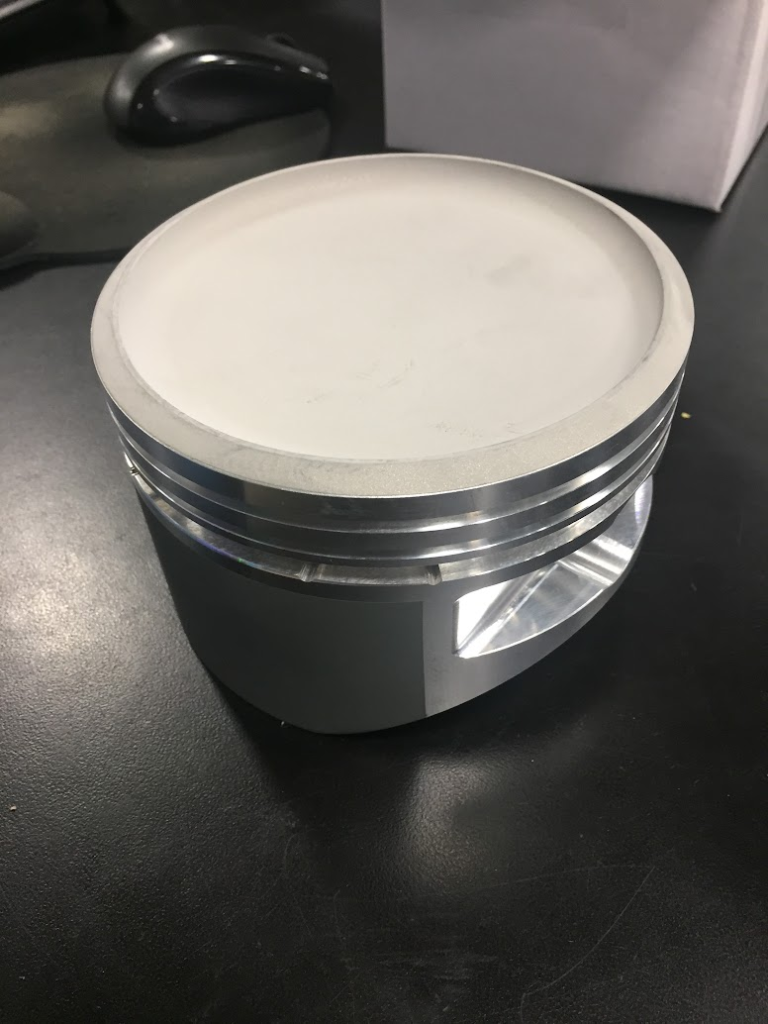

These changes were intended to improve reliability at higher temperatures and manifold pressures as well as improve combustion efficiency. The new pistons were installed right after PRS giving us time to adjust the new setup and recalibrate our SDS electronic fuel injection and ignition system.
With the new cylinders installed and the SDS calibrated it was time to fly to Oshkosh for the Air Venture Cup. While Andy had raced in the AVC before, this would be the first time with a race motor and race propeller. The high power systems are sized for 8 minutes at Reno, so the longer race was only 45inHg. The new positions and calibration performed perfectly, averaging 327mph, taking first place in the Unlimited Class and first overall! Was great to beat the Cirrus jet and a turbine.
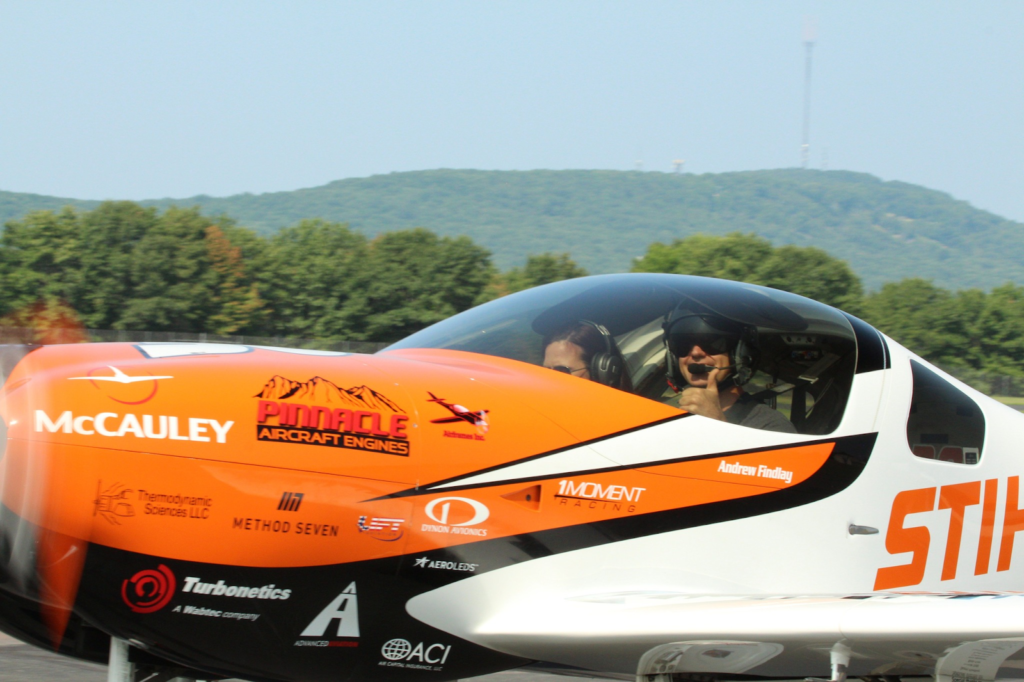
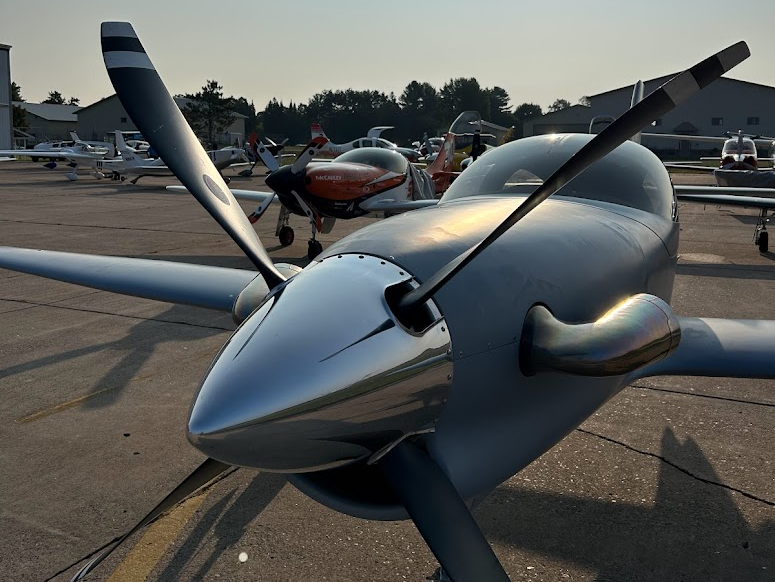
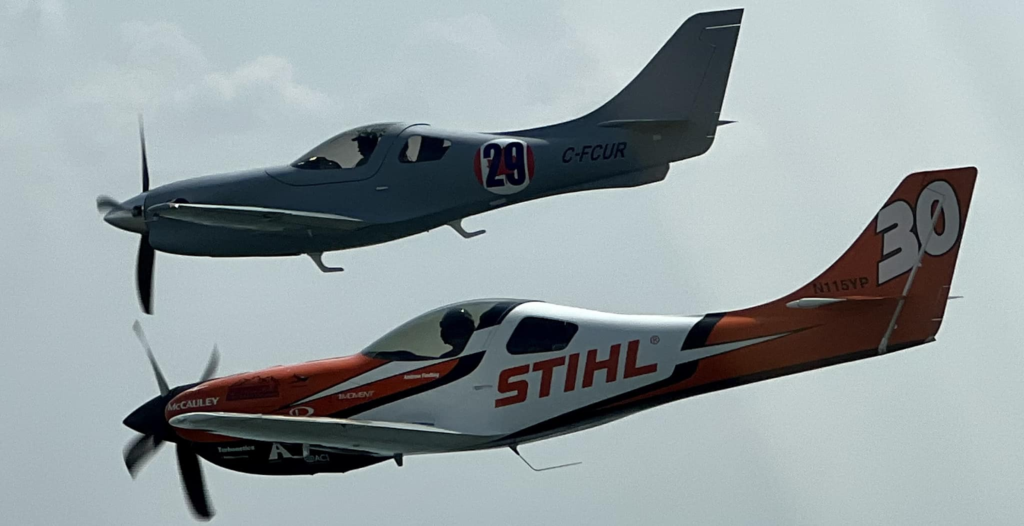
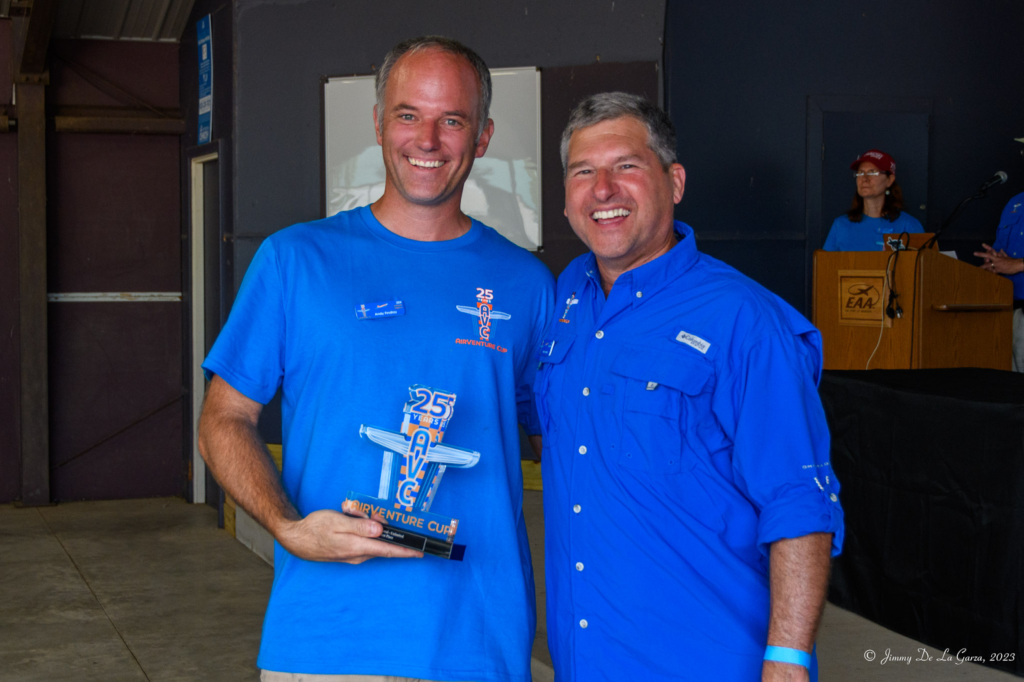
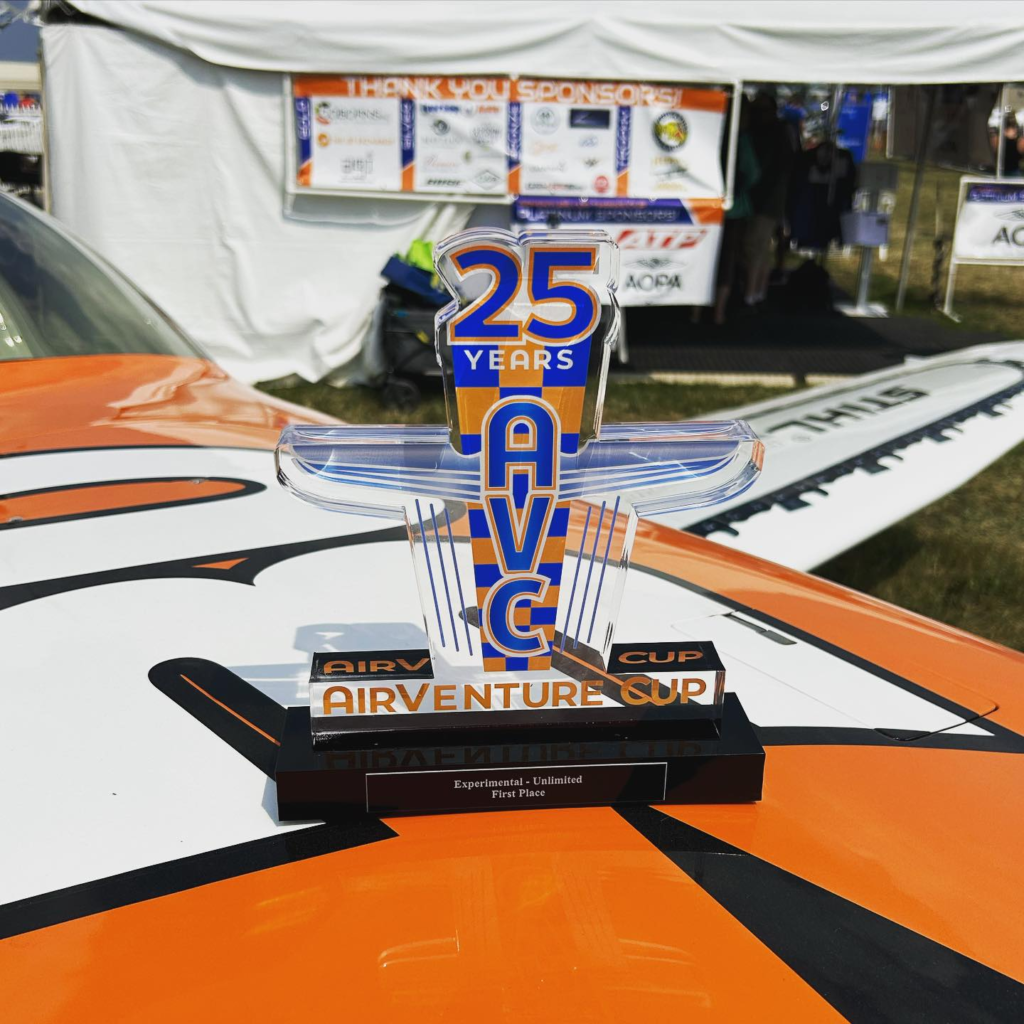
After the AVC Andy and the boys got to spend several days camping at Air Venture
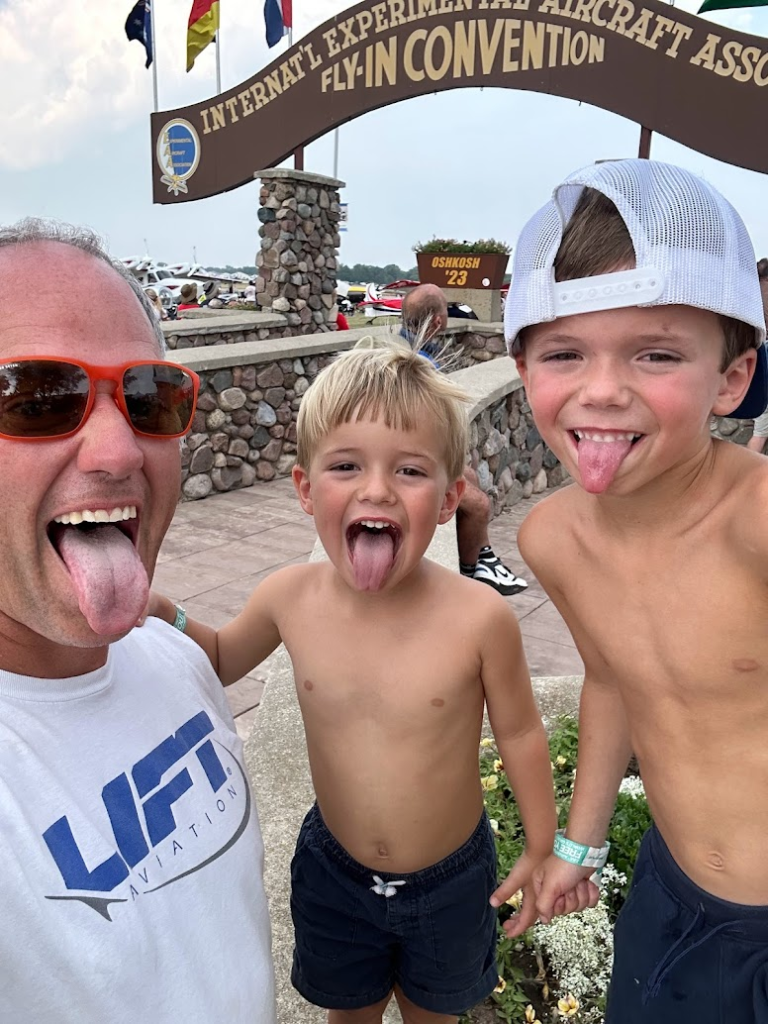
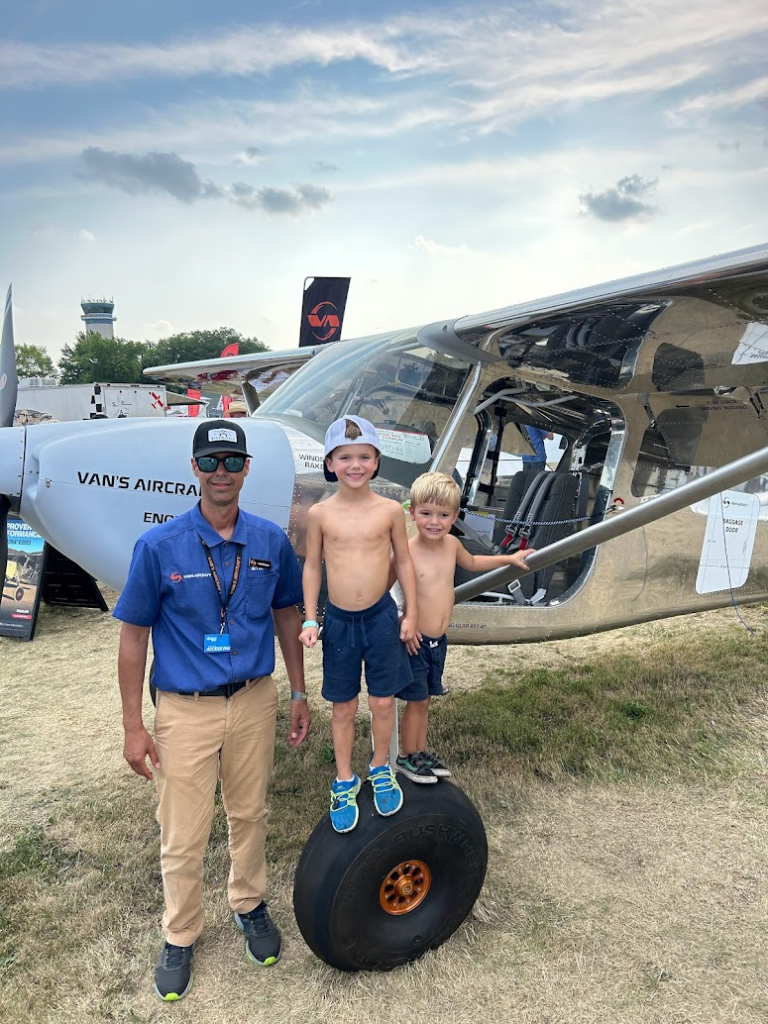
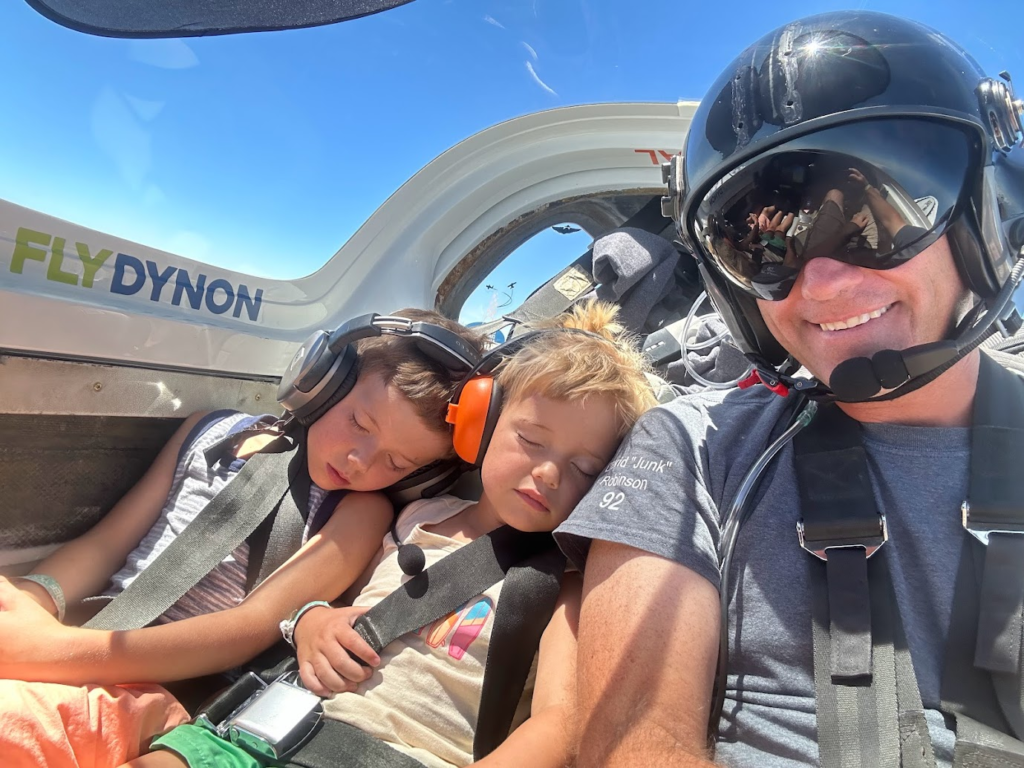
SARC
In August the new Sport Air Race Council (SARC) after countless man-hours of coordinating with the FAA and regulatory officials, successfully hosted its first event in Madras Oregon. This was our first race outside of Reno. With this successful, SARC proved itself capable of hosting a safe air racing event, and deserving of accreditation from the FAA. This was a big step toward more races, new courses, and creating the opportunity for a true national championship with multiple races around the country. Bill Beaton has been the champion of this endeavor, huge accomplishment for him and the team.
Final Reno Prep
With Reno fast approaching the focus was on fine tuning our fuel and high power settings with the new pistons.
The turbo chargers surging on the start has plagued us for multiple years. And this is because we’ve always run fixed internal wastegates. This works well once up to race power because internal wastegates are simpler and more durable (Jeff Lavelle’s mayday in the Gold race last year was due to a failed external wastegate).
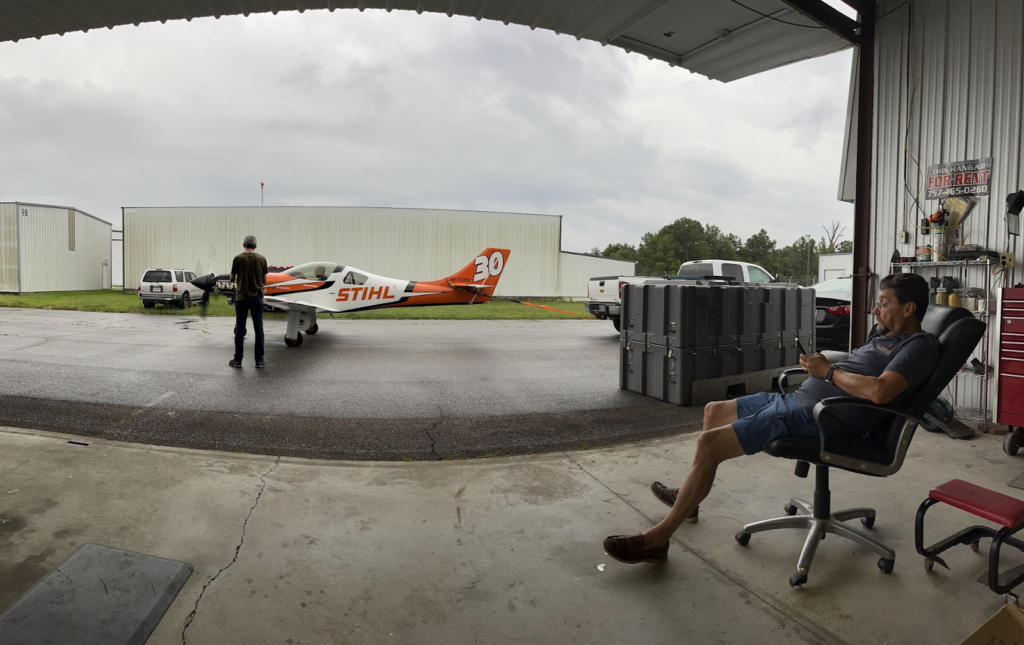
So this year we experimented with a system that would control waste gates based on manifold pressure. This would, in theory, enable a smooth increase of power while coming down the chute. Unfortunately, after two weeks of troubleshooting, ground runs, and test flights, the system was no better (if not worse) than where we started. So it was back to the fixed waste gates.
The engine was unhappy with this set up, the CHT temperatures would rapidly increase, as the EGT trended down, hinting we had reached the limit of 100LL and detonation. Without the VP 160 fuel we have available at the races, we ended up reducing the boost and timing with the new pistons. This was somewhat expected with the higher compression ratio, but the rapid CHT increases were very surprising. This testing also showed the robustness of the new piston design. Just to make sure everything inside the engine was ok, we borescopes the engine and everything looked great.
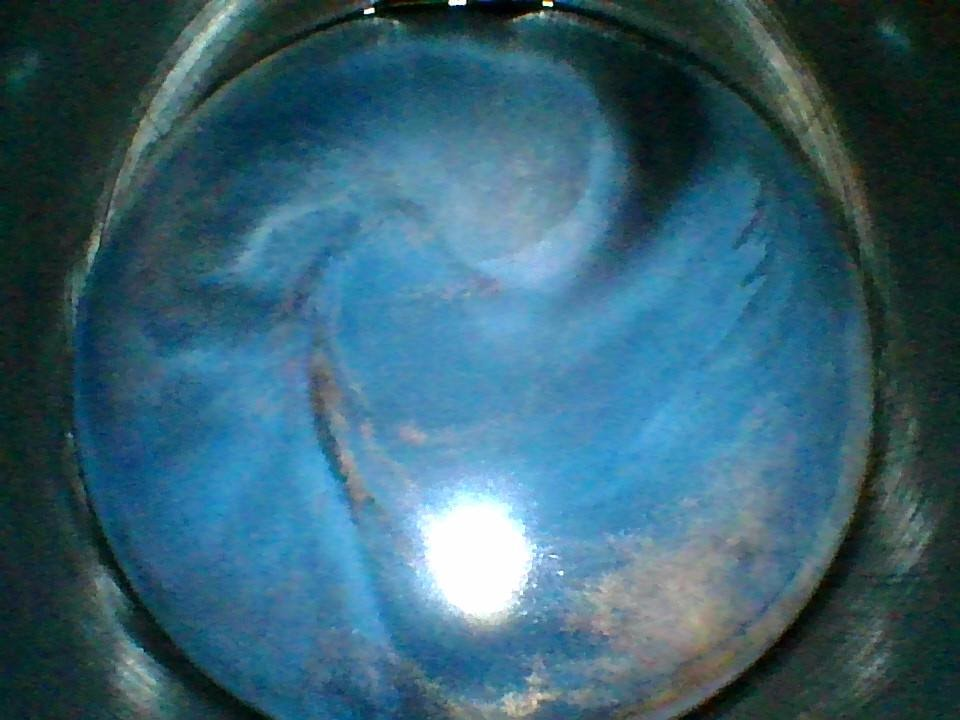
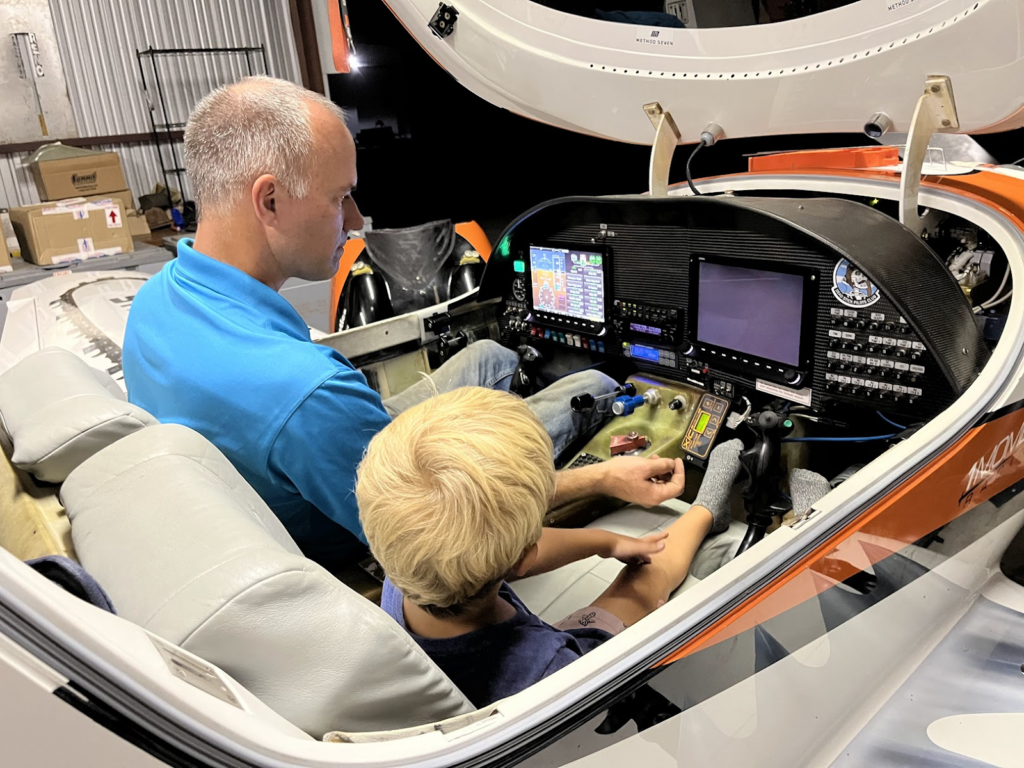
The Final Flag
Qualifying
Things got off to a rough start. With so many racers needing to qualifying, we were restricted to only one chance to call for the clock. With the turbo charged engines, the preference is to qualify in the late afternoon when it is the warmest, so a qualifying attempt was planned for Monday afternoon. But upon entering the course, the engine stumbled and started running hot, so rather than lock in a slow time, Andy pitched up and aborted the qualifying run, in the hopes that the team could make some adjustments and set a qualifying time the next day.
And those hopes would pay off, with Andy and Race #30 setting a new personal (and Lancair) qualifying record of 406mph! (For comparison, if we still used the Optimum Flight Path timing from 2003, we would be posted a 414mph qualifying speed)
To cap things off, Jeff Lavelle took off for the last Sport qualifying session on Wednesday morning and despite the cooler temperature laid down a 410mph lap! (~418mph by 2003 standards)
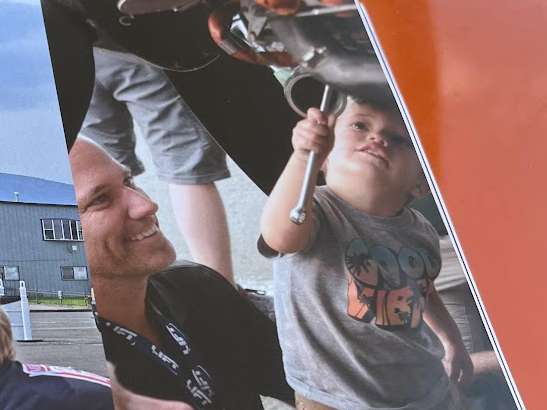
Thursday
In previous years we would progressively tape up the airplane leaving the smaller details, like the cockpit air vents, for Sunday. But this year, with both Jeff and Andy setting record qualifying times, the hunt was on for every last microknot.
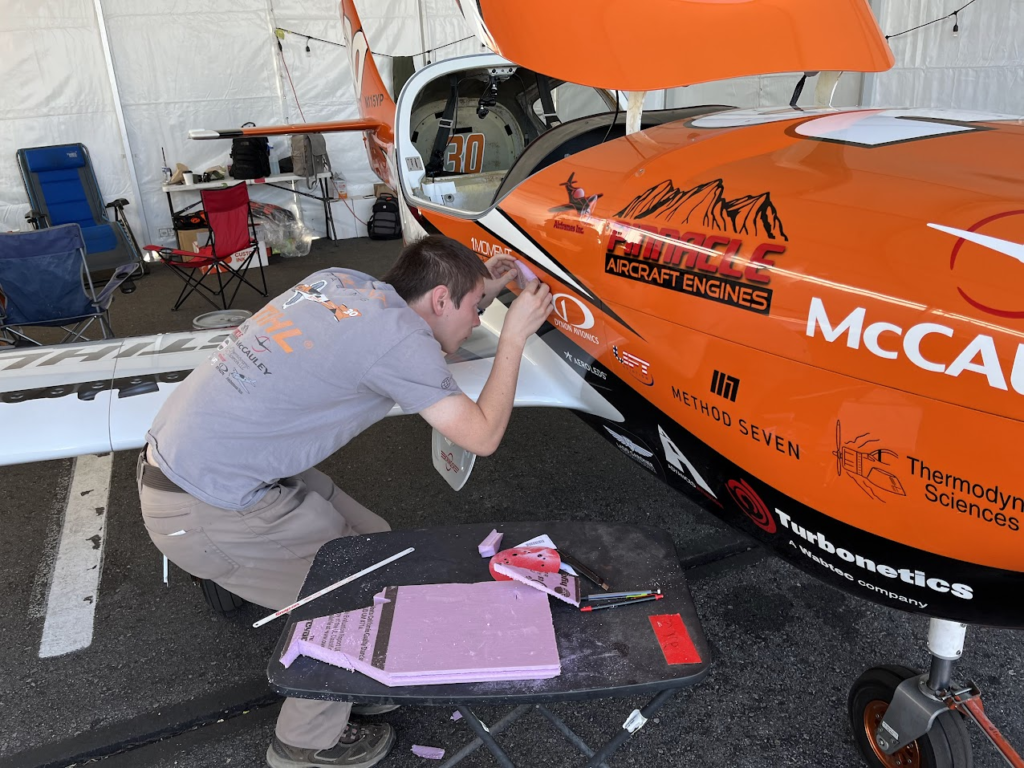
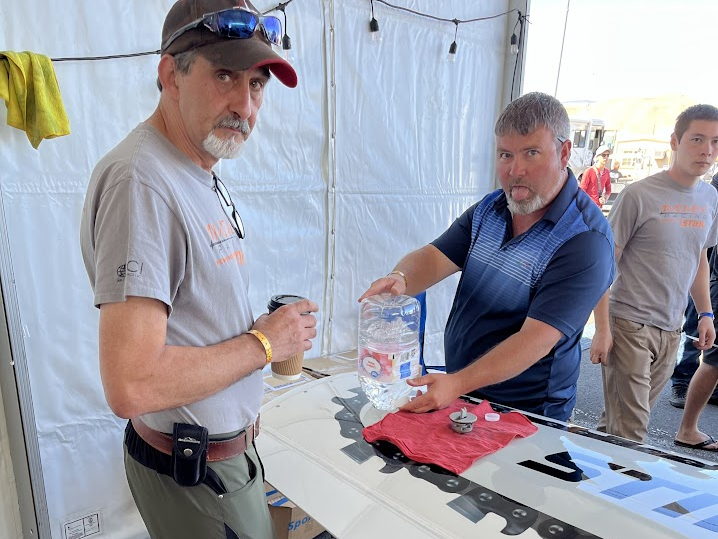
Coming down the chute Andy got a smooth start, and gave Jeff plenty of racing room around the guide pylon, it’s the first race of the week, so there is little point to risking a tighter line. This dropped Andy back about 1 second (approximately 600ft at 400mph) by the end of lap 1. Over the next couple laps Andy slowly chipped away at the lead, closing onto Jeff’s tail by the end of Lap 4. But by then they began to encounter lap traffic, and again rather than force the issue, Andy flew a wider line, giving Jeff room to maneuver and finishing just over half a second back.
Overall it was a great race, reminiscent Thursday’s heat in 2018. The major distinction was the speed! Both Jeff and Andy clocked in over 402mph. This was only the third +400mph race (since the timing change in 2017) and the first time where 400mph was achieved by multiple airplanes.
Friday
Going into Friday’s race morale and expectations were high, with the semi-satirical lesson from Thursday being that if Andy wanted to get past Jeff he needed to do it by lap 4. Simple? Yes. Easy? Not so much.
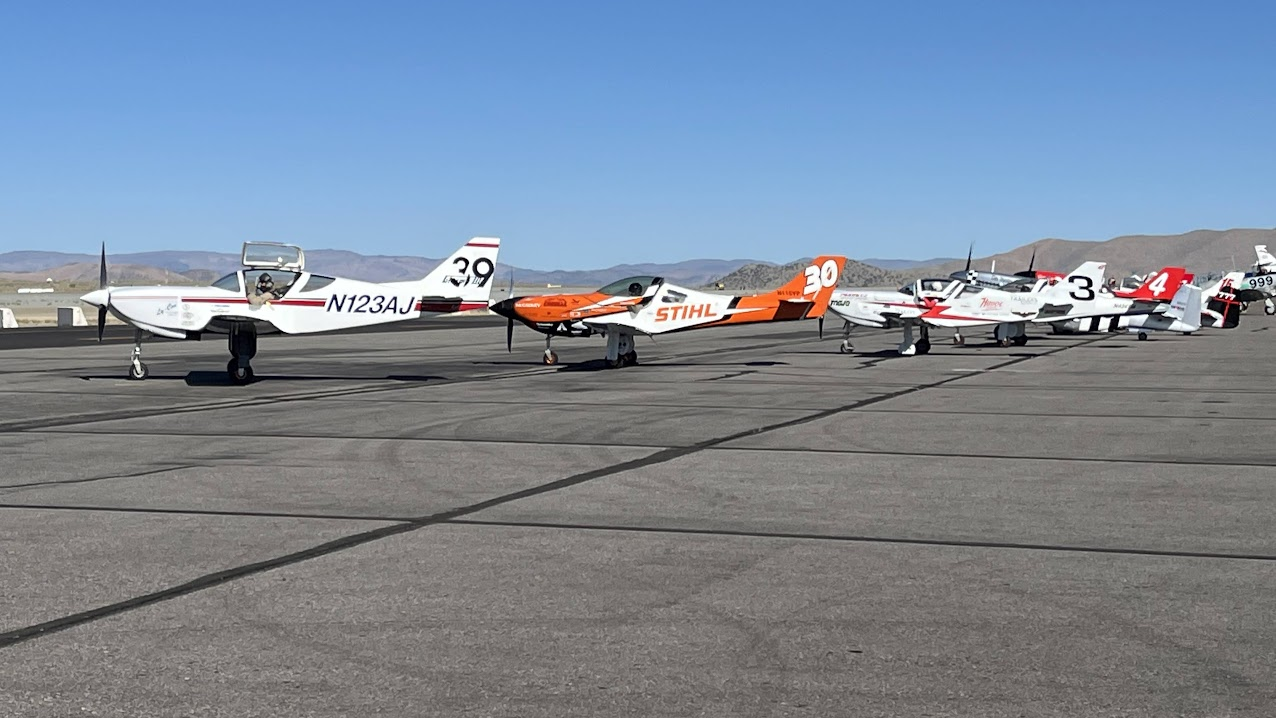
Like other forms of motor racing, the start is one of, if not the most, difficult part of the whole race. Pilots have to maintain safe separation, maintain a line abreast formation with the pace airplane, and manage the engine and cooling systems while increasing to 2x or 3x normal cruising power.
While coming down the chute Andy was caught out too far ahead of the pace plane. As Andy reduced power to fall back in line, the pace jet pulled up and called “Gentlemen you have a race.”
Andy pushed open the throttle to regain lost momentum, only for the engine to surge all the way to the guide pylon. By the time Andy had dealt with the surging Jeff was 7 seconds ahead.
Team Poster
With this being the last Reno, Andy wanted to do something special to commemorate the people that made this journey possible. So he and “young” Thomas sorted through 11 years of photos and videos and compiled them into a mosaic. And while it looks great from a distance, the most rewarding moments were at the team dinner and seeing people point to the individual pictures and hearing the stories associated with each one.
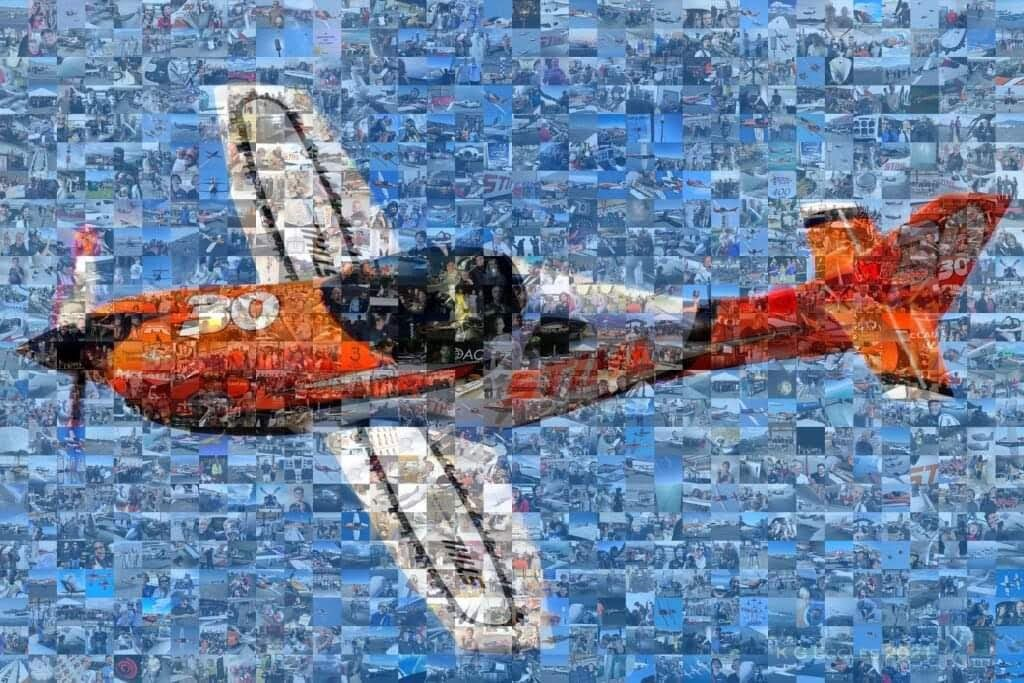
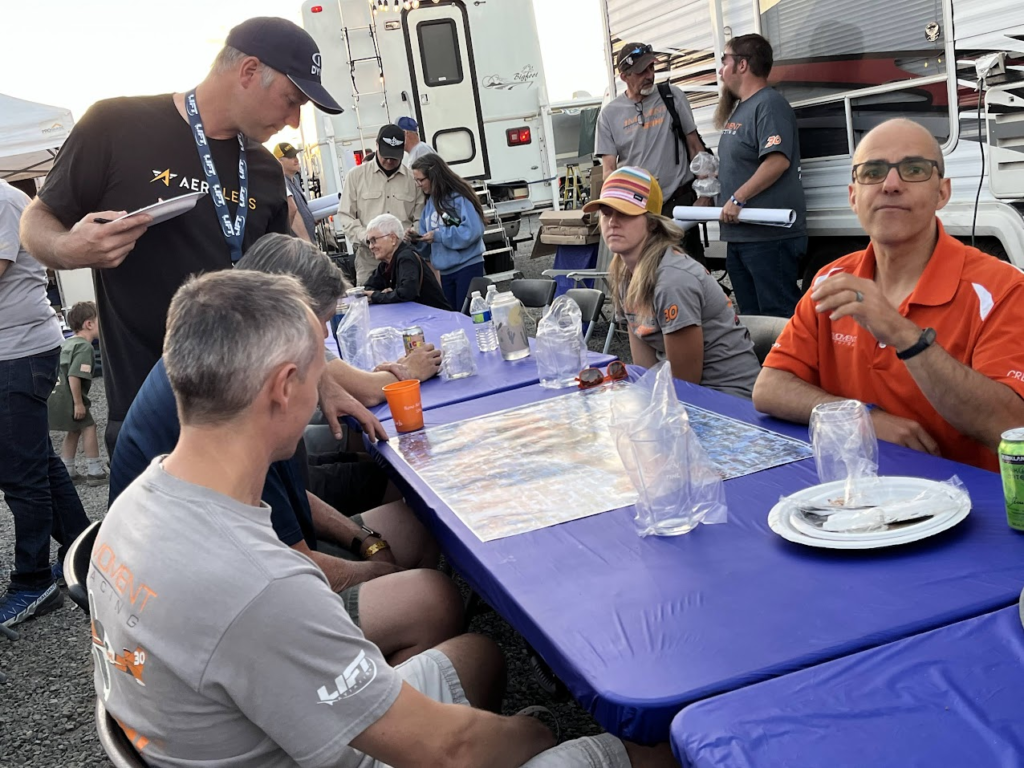
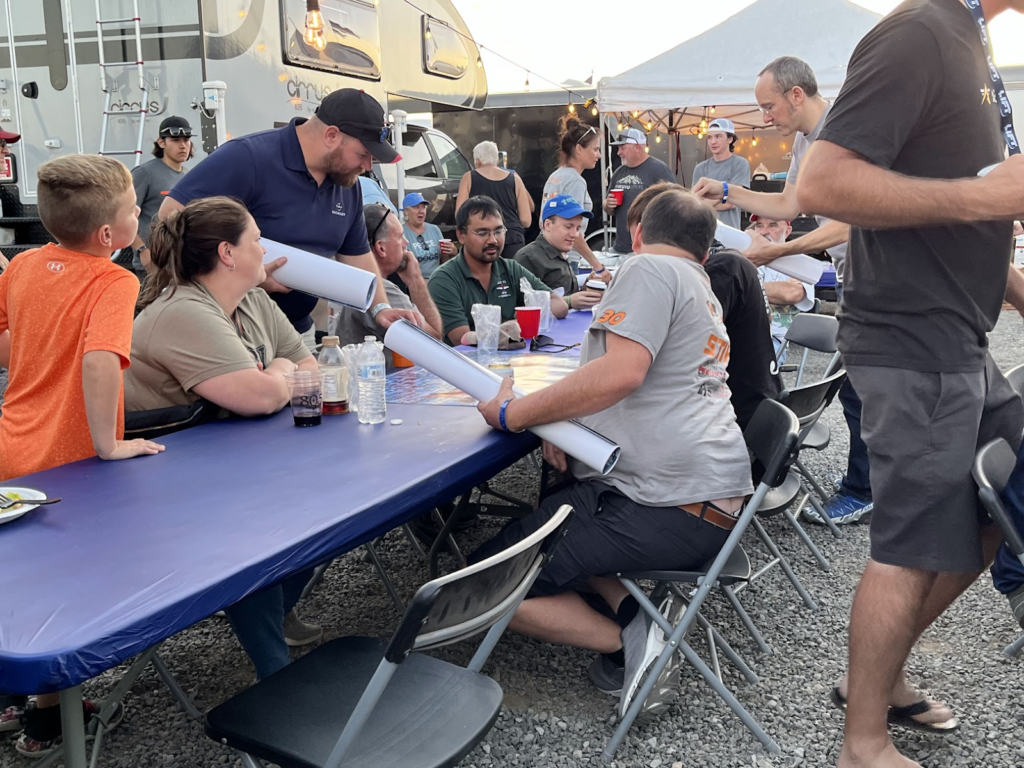
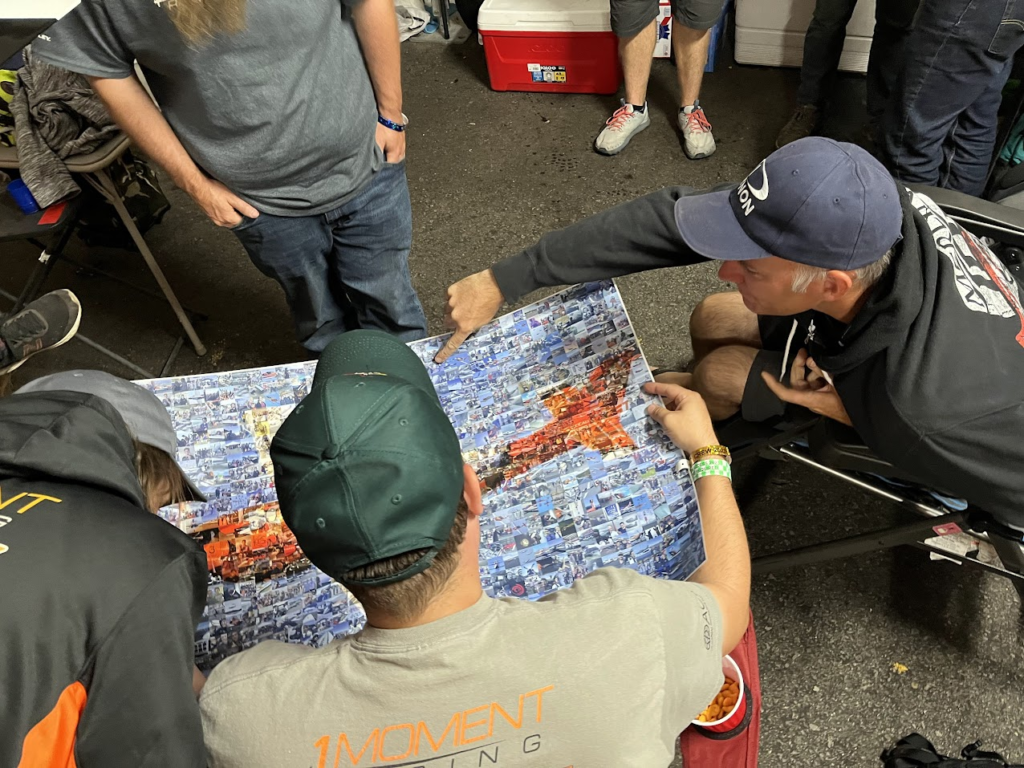
Saturday
The next morning, while checking over the engine, Shane discovered that if he applied light pressure to the stock engine baffles that they would shift and create large gaps for air to leak through. With the engine now running over 100 inches of manifold pressure, every last molecule of cooling air is important.
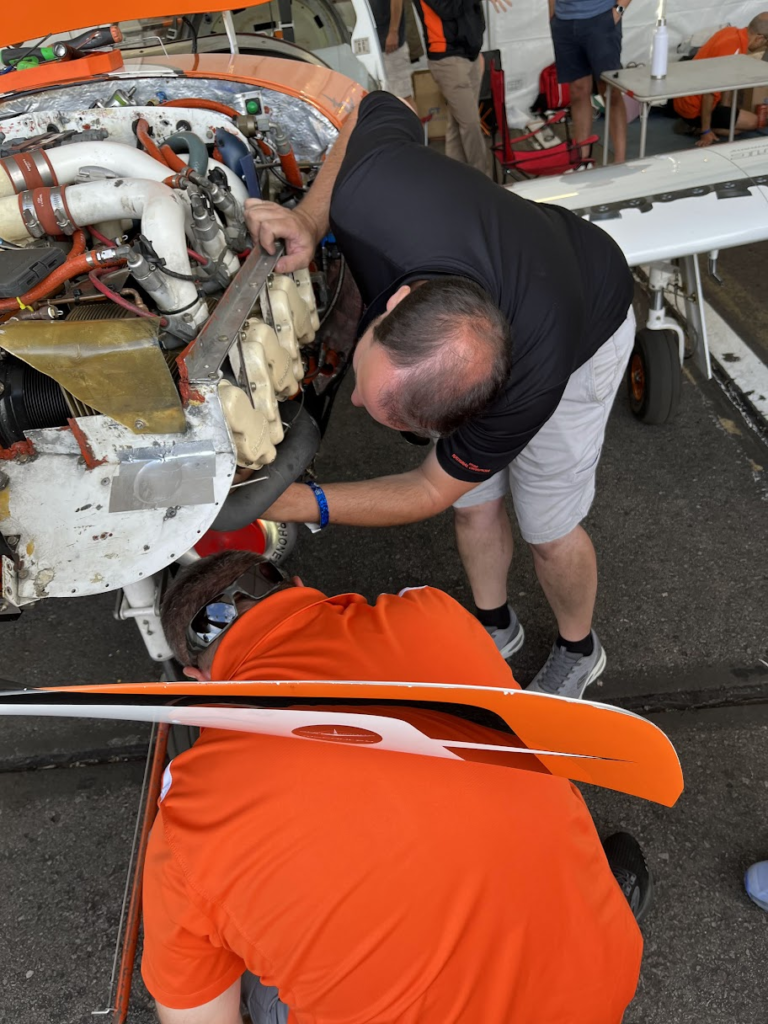
The rest of the braintrust spent the morning trying to fine tune the power and wastegate settings and hopefully avoid the surging issue during the start.
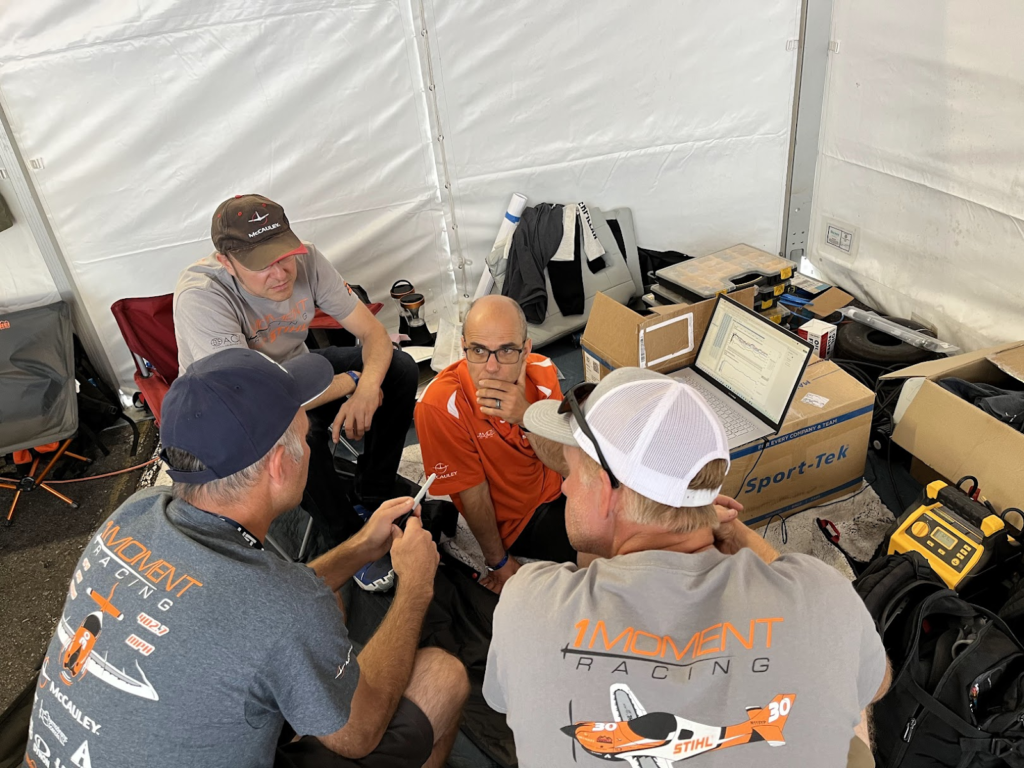
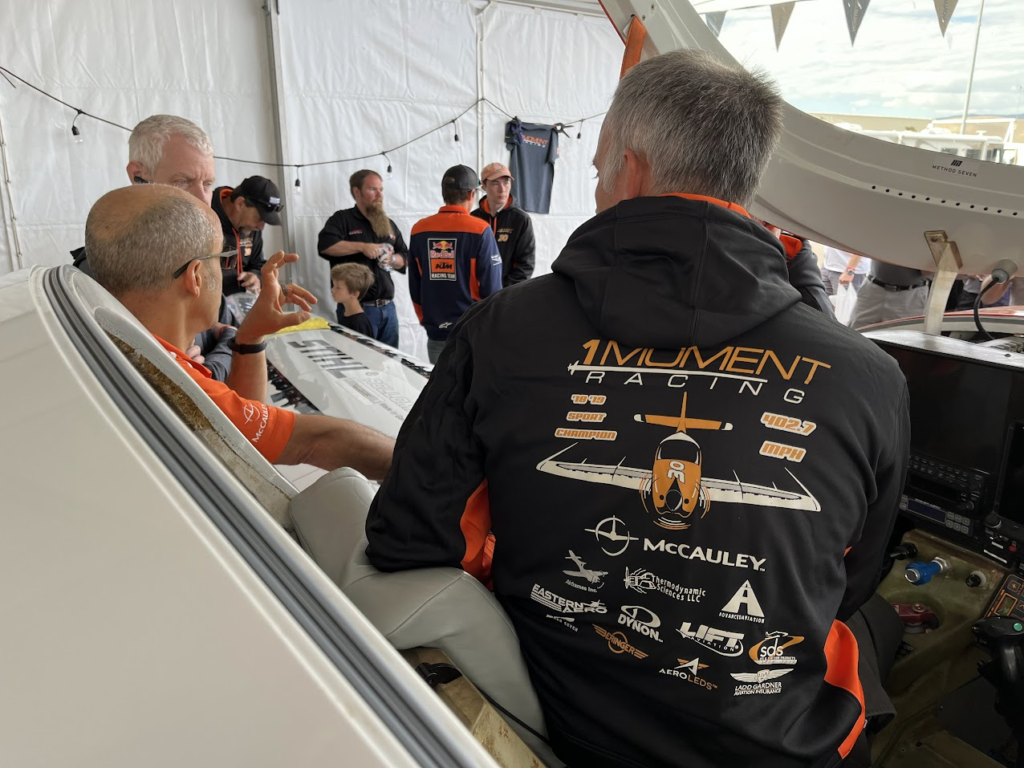
Unfortunately Saturday’s race would go much like Friday’s. Although Andy did get off the line faster, he encountered surging again and lost all the time he had gained, holding steady at a 7 second gap.
The real highlight of Saturday’s race was the race for third between Tom McNereney and Sean VanHatten.
New Sport Class Leadership
With this being the last Reno, Bob Mills, Rick Vandam, and Tom McNerney chose to not seek reelection. These men have been instrumental in making Sport Class a success, and deserve tremendous thanks from racers and fans. Rick found start the class. Tom managed logistics behind the scenes, and Bob took up the position and provided much-needed leadership after the tragic loss of Lee Behel.
So, as air racing moves to new venues there will also be new class leadership. Tim Slater (Race #10) was elected president, Sean VanHatten (Race #3) was elected VP of Operations, and Andy was elected VP of Strategy and Development.
Saturday Evening
Saturday evening during the Sport Class dinner we got a visit from Jon and Patricia Sharp. They created the Rocketeer award (with the real helmet from the movie) which goes to the pilot with the biggest speed improvement from the previous year (for the same airplane). It’s an award for continuing to push and improve these airplanes regardless of whether you are in the Bronze heat or in the Gold. And so it was fitting to see them present the Rocketeer award to this year’s winner Joe Coraggio.
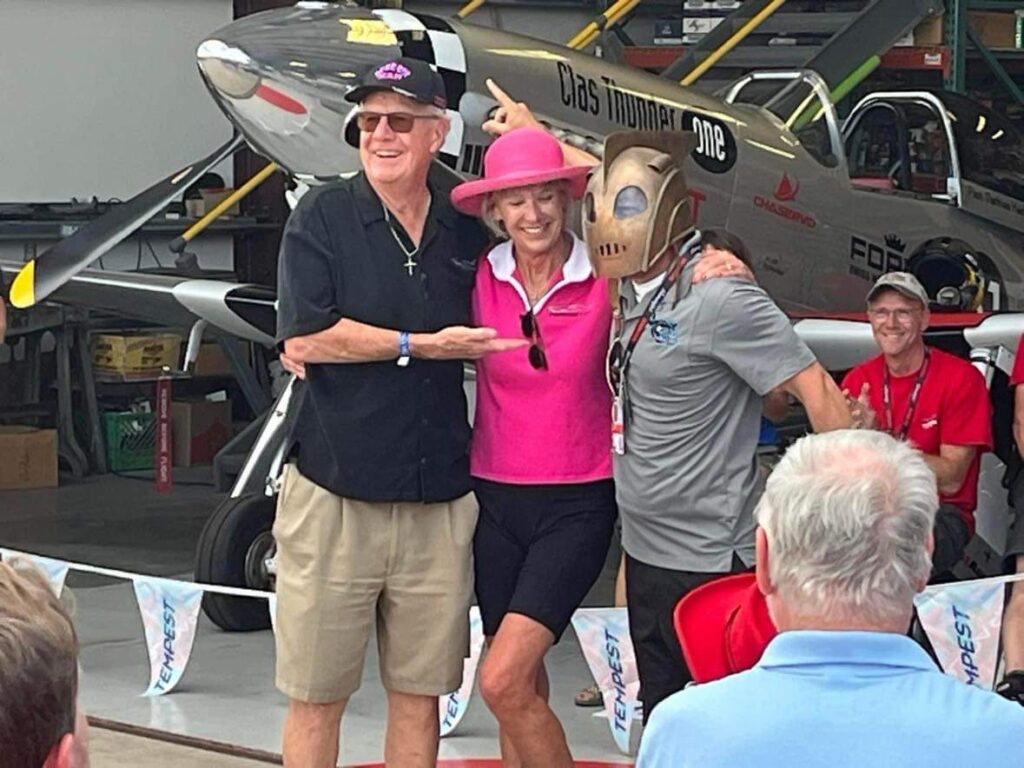
Sunday
The team worked into the night trying to resolve the surging issue for Sunday’s gold race. A slew of adjustments were made, and learning our lesson from 2021 where we could have benefitted from another test flight, the team pulled together to get the plane fueled and ready for a morning test flight. Andy staged and took off with the Bronze heat and while they were on the course he circled off to the North, testing the new settings.
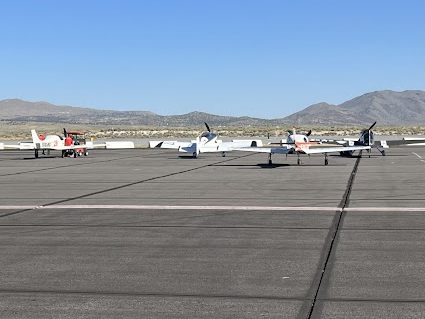
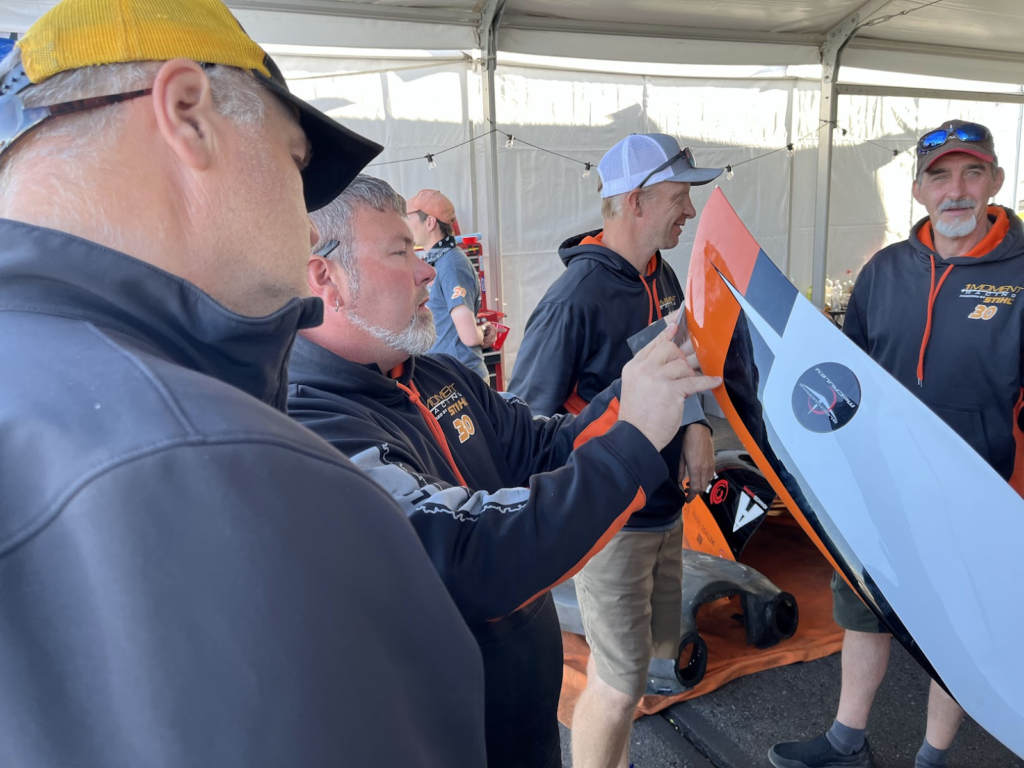
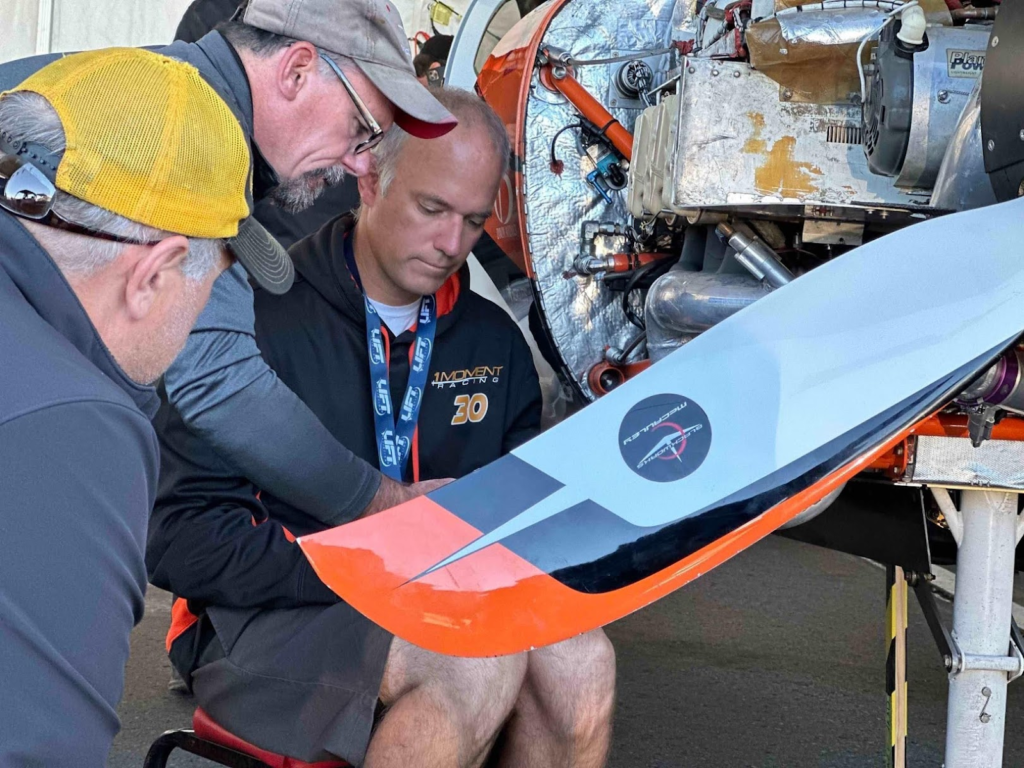
Unfortunately, the new adjustments did not help, in fact they made things worse. And so it was back to the previous setup with the hopes that Andy could repeat his start on Thursday. And just behind us in 3rd and 4th there was a lot of anticipation to see Tom run some more power and try to overtake Sean.
Sadly, we never got to see these final showdowns. The loss of Chris Rushing and Nick Macy, two racing veterans who had just finished 1-2 in their own gold race, is tragic. Our hearts go out to their families, crews, and loved ones.
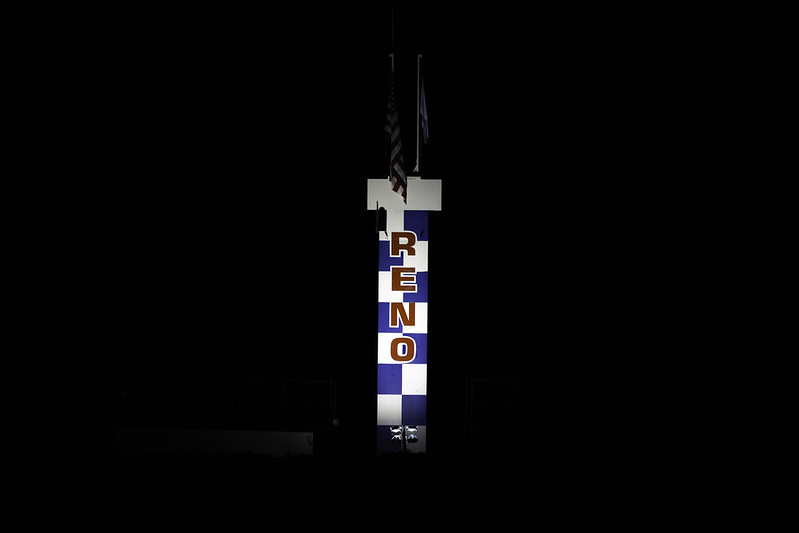
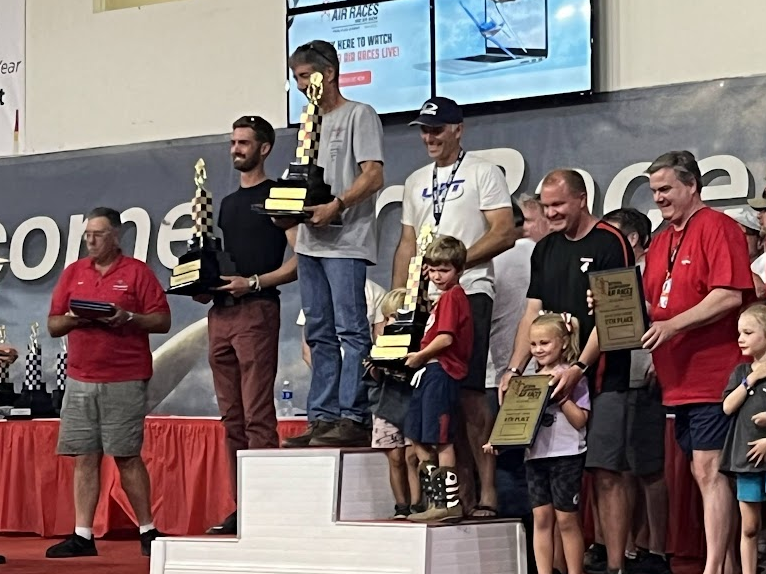
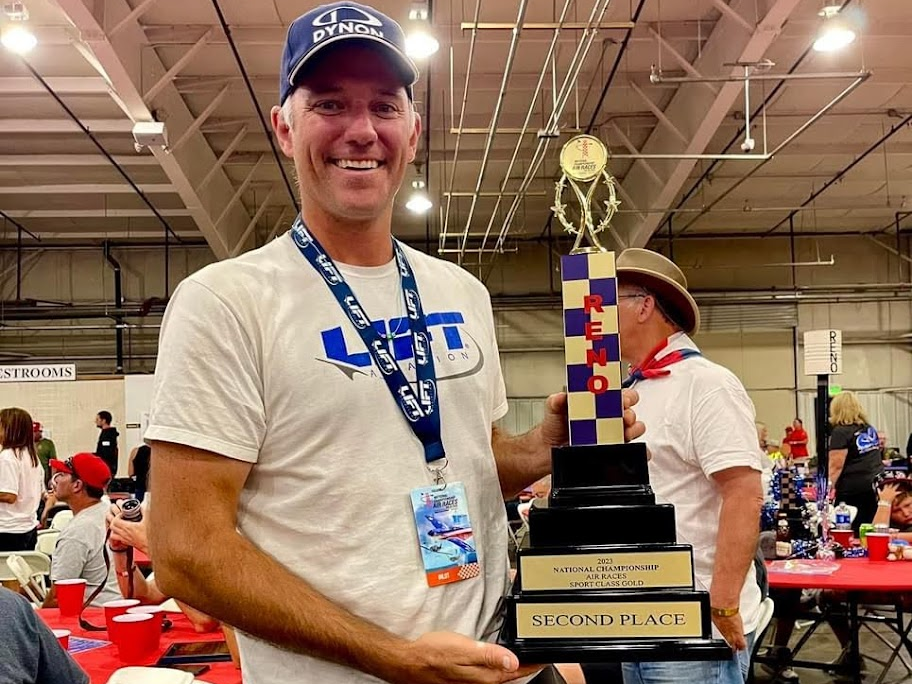
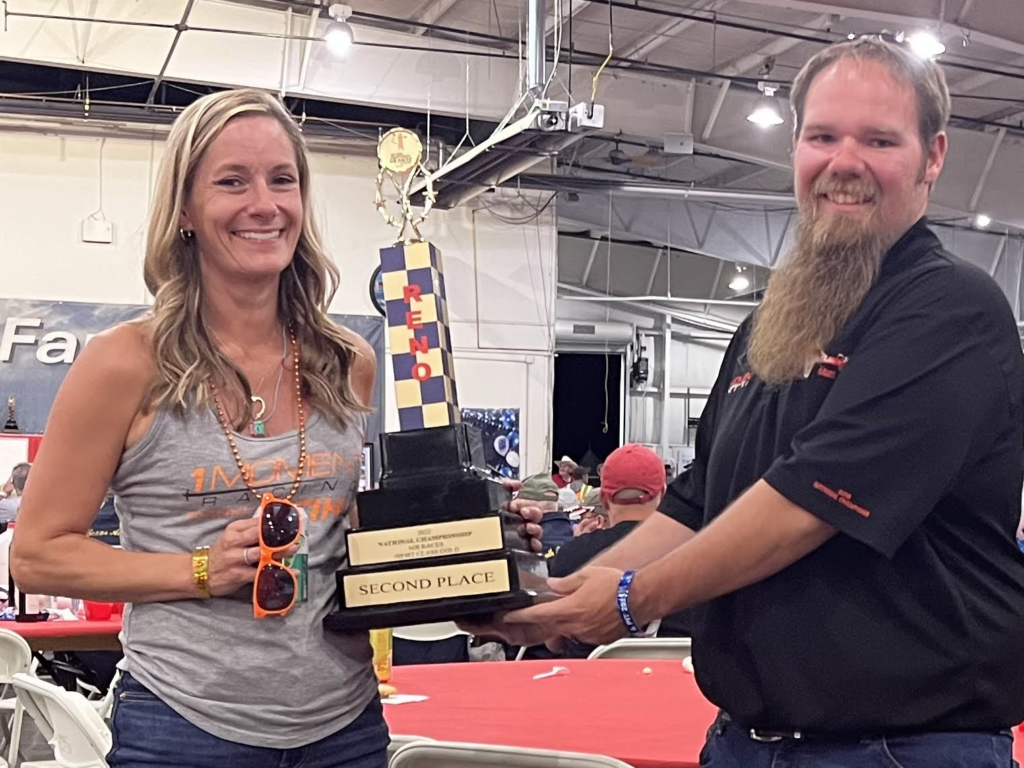
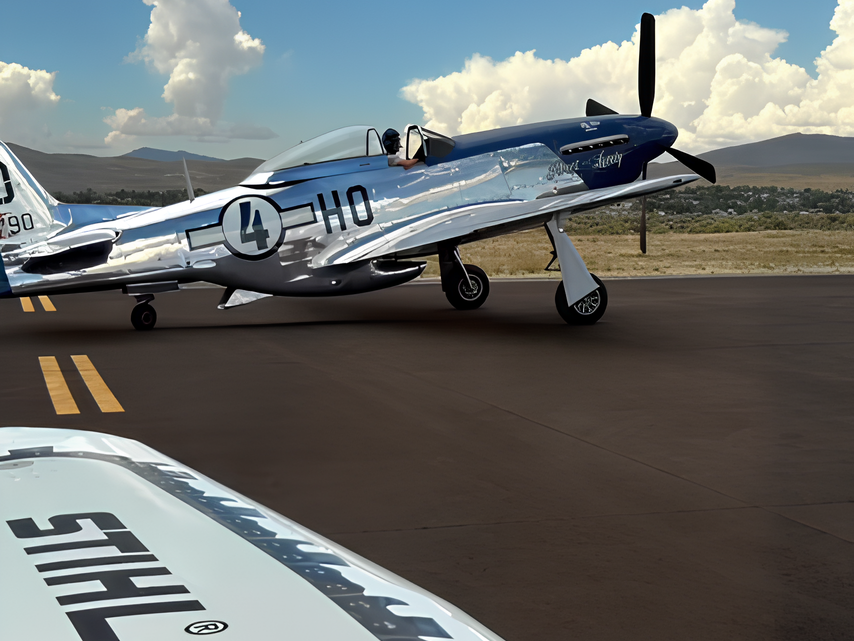
Hello Las Cruces and the Sport Air Racing Council
With the final Reno Air Races concluded it is time to work for the future of air racing.
And for that we did not have to wait long. SARC organized a race to be the headline event for the Las Cruces Air and Space Expo in October.
Andy arranged to leave Race #30 with Joe Coraggio for a few weeks before coming back to fly together the rest of the way to Las Cruces.
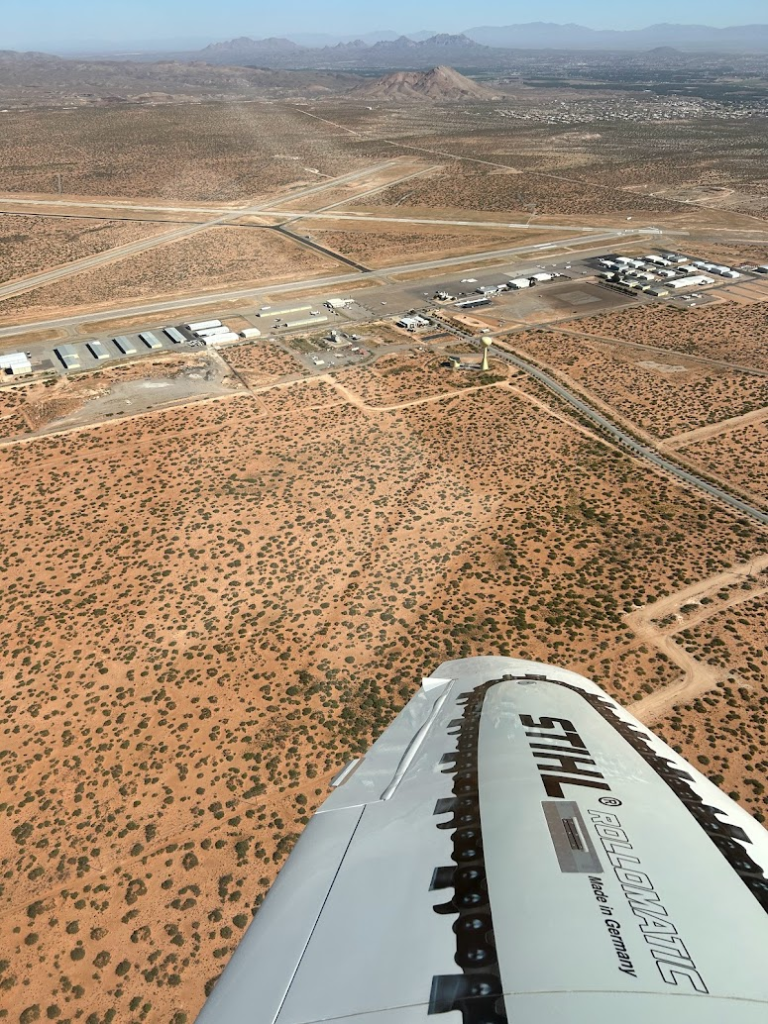
While the race itself was with a speed limit (by insurance) and the results were pre-arranged this was an important foundational event. It was the first airshow in Las Cruces in 15 years and the first race in the After-Reno (AR) era.
As for the flying itself, it was fun getting to know a new race course after years of only racing around Reno. With the speed limit, Tom and Andy we were able to fly a lot closer together at matched power settings, similar to the sessions at PRS. While this is easier on the engine, it puts a much higher demand on the skill of the pilots as they race in “uncooperative formation.”
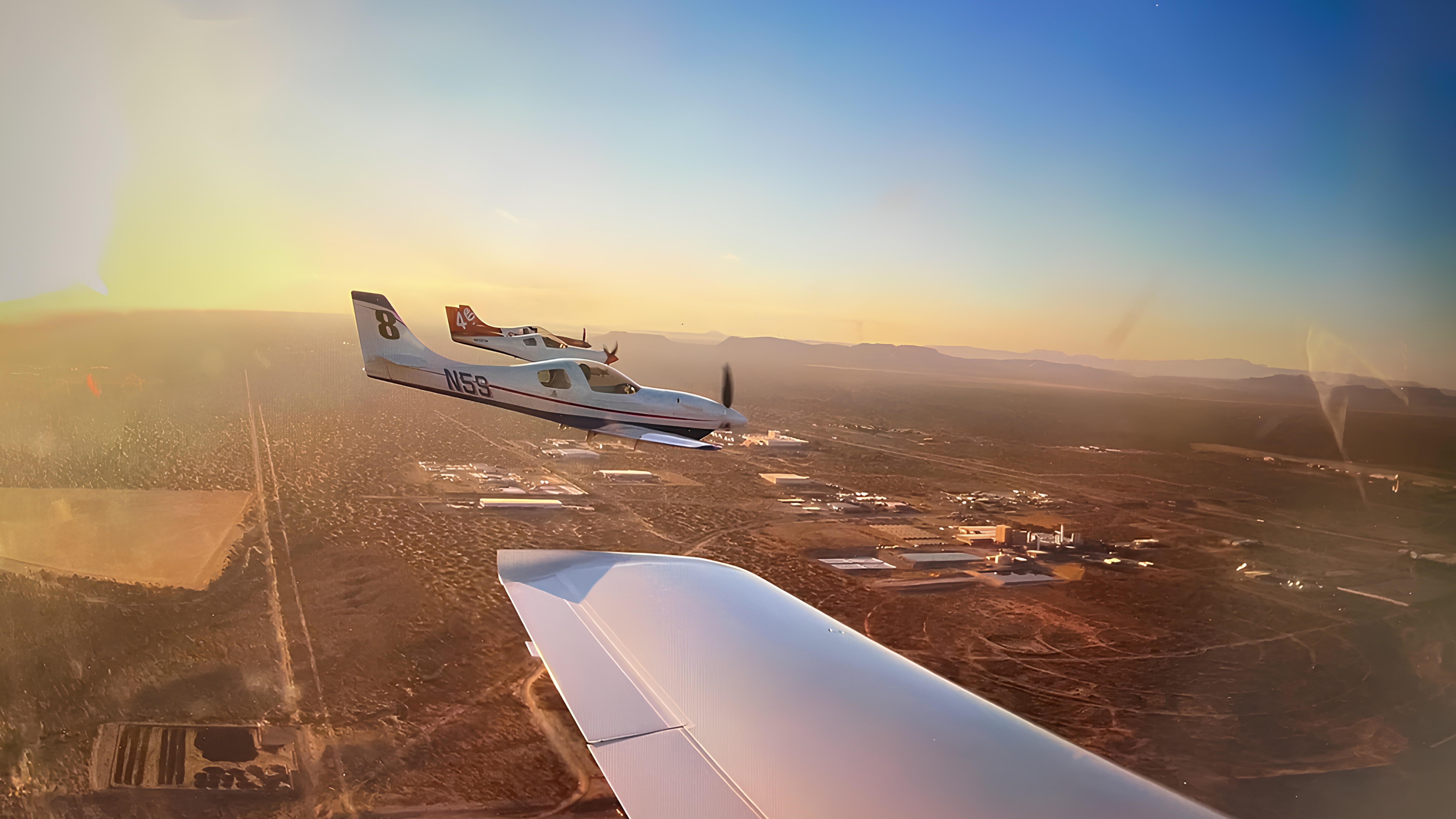
The event was a resounding success with thousands of attendees and new air race fans. As an organization it was a great success with everyone getting more experience with running a full race event. We fully expect to do a full race (no speed limits) come 2024. So stay tuned to the Sport Air Race Council (or become an associate member) and we look forward to seeing you there!
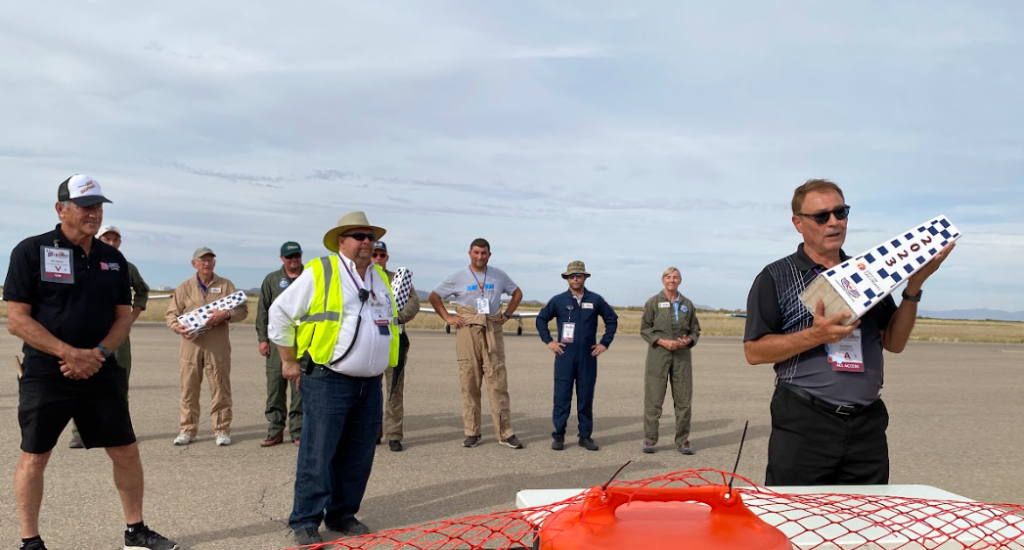
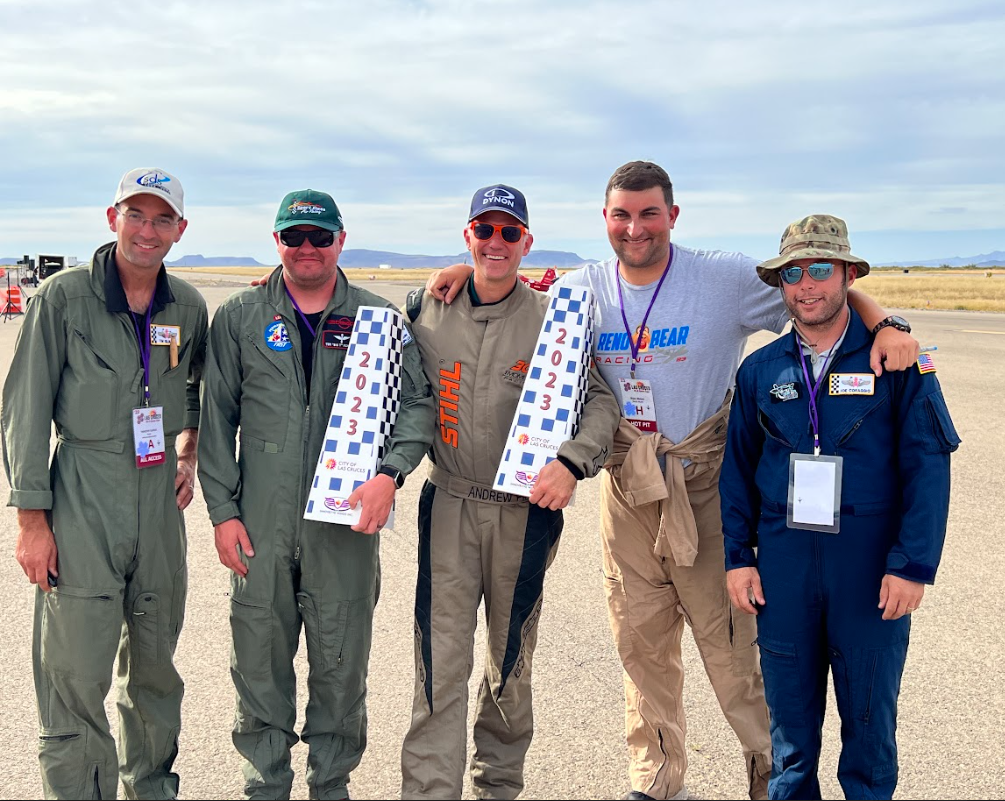
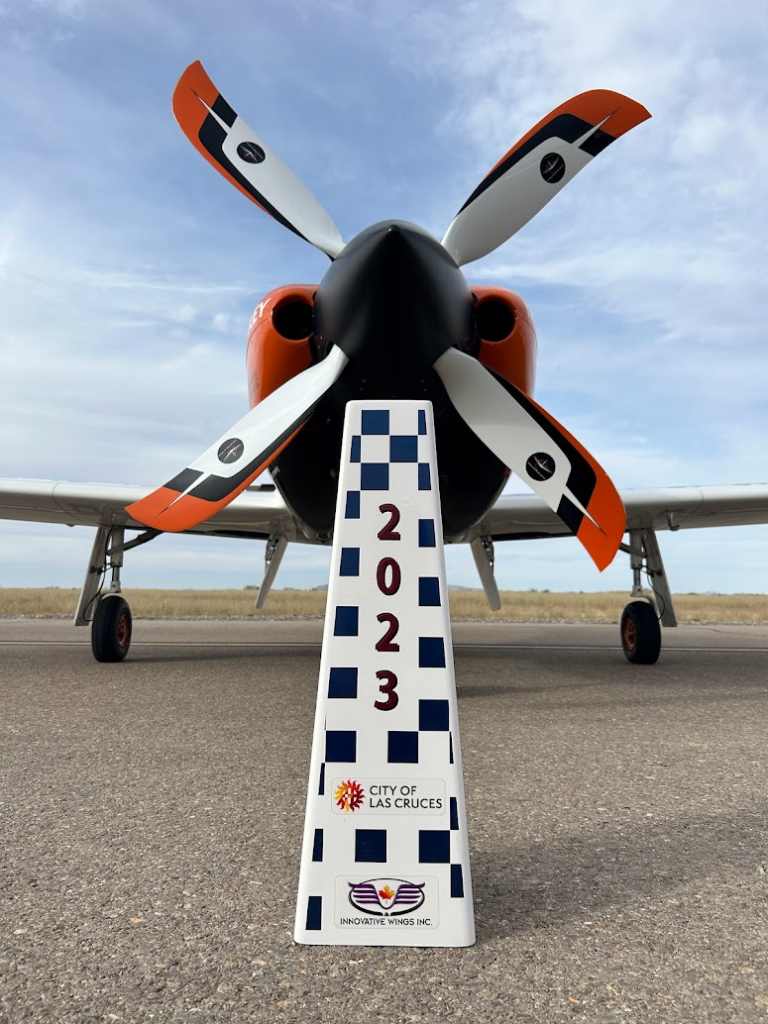
Closing Thoughts
One Moment is about living and being fully immersed in flying, and we will continue that with SARC’s new accreditation. We plan to introduce more venues, more pylon practice, and more pilots. We will continue to improve our skills and safety just as we continue to push ourselves and our airplanes.
So long Reno, it’s been an amazing experience, the highest of highs, and heartbreaking tragedies. Thank you for the life lessons, the best camaraderie and bonds with the fellow racers and crews that can’t be put into words. No other motorsport has the trust and support of their fellow competitors.
Thank you to everyone for your support. We have an incredible team, amazing sponsors. It has been an honor and a privilege to fly with the best of the best. To go from just a kid with a dream to participate, to competing at the highest levels. Thank you to my wife Jackie, our families, our incredible team and sponsors, and the September Family that made it all possible.
See you in 2024 with more formation flying, pylon training, and multiple sport events!
